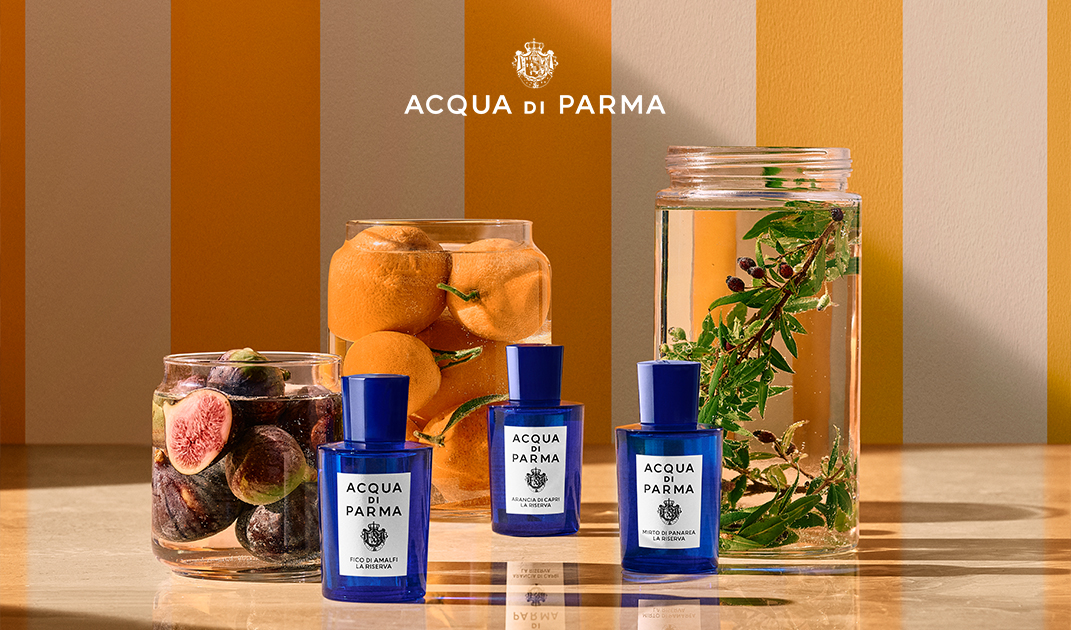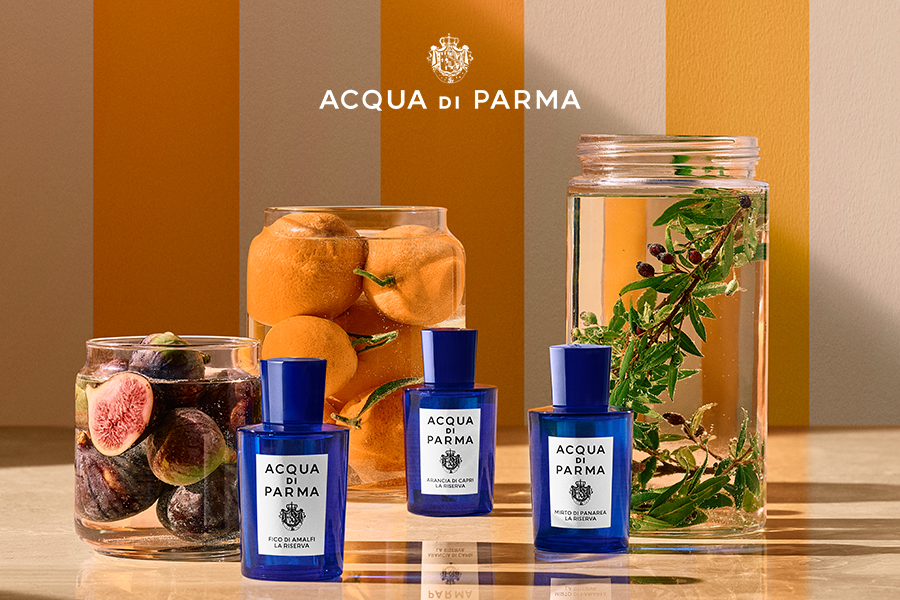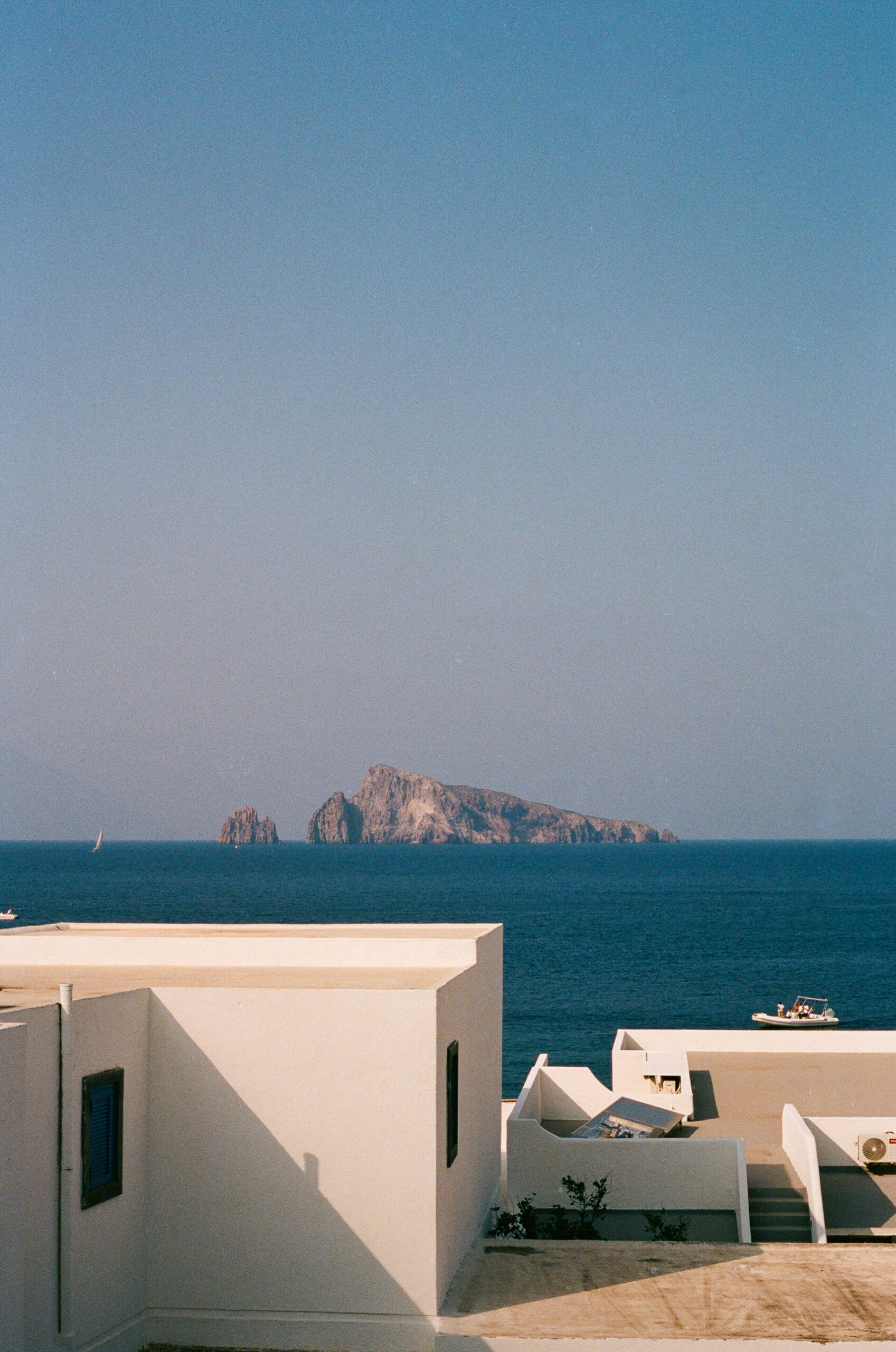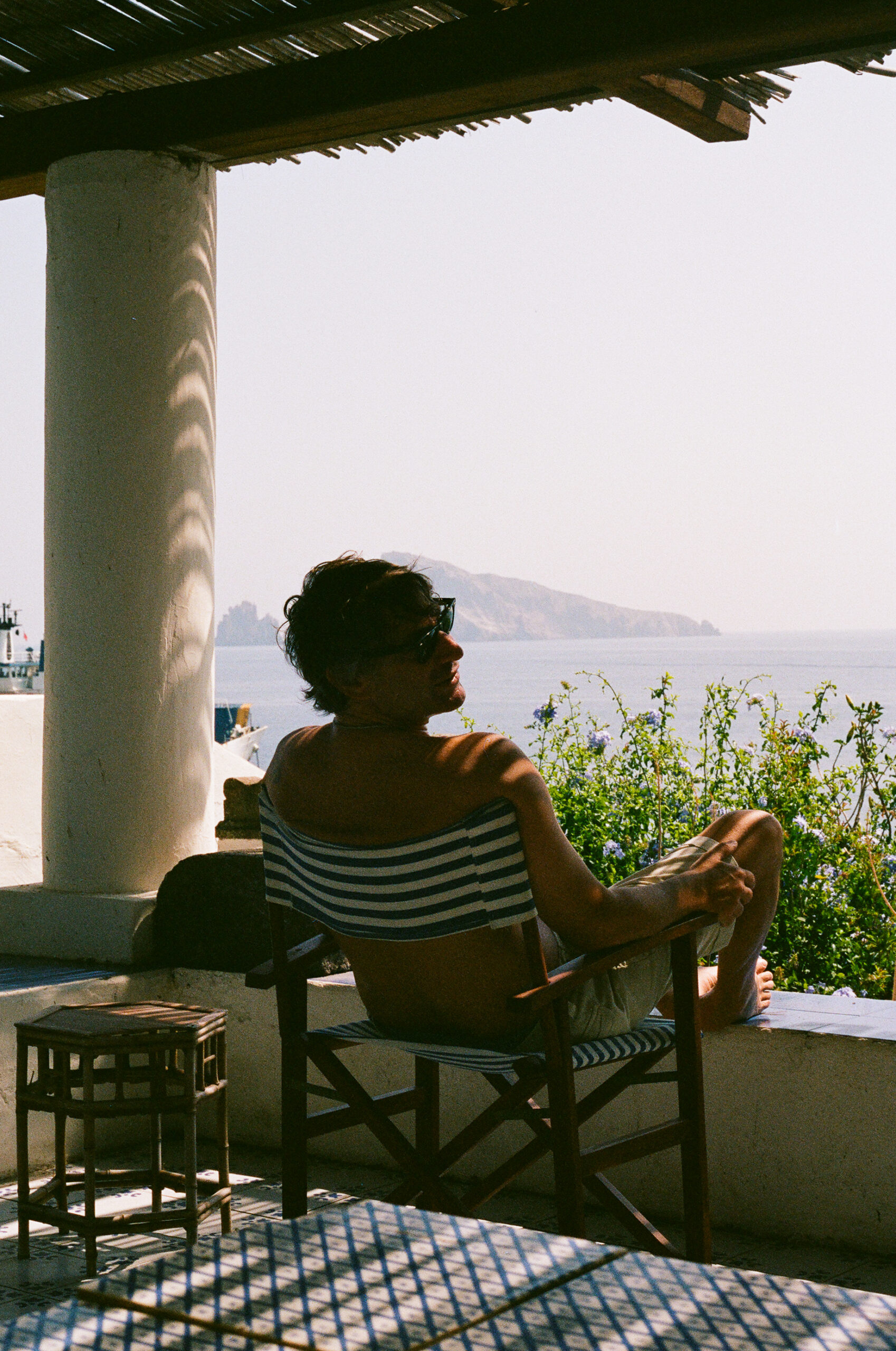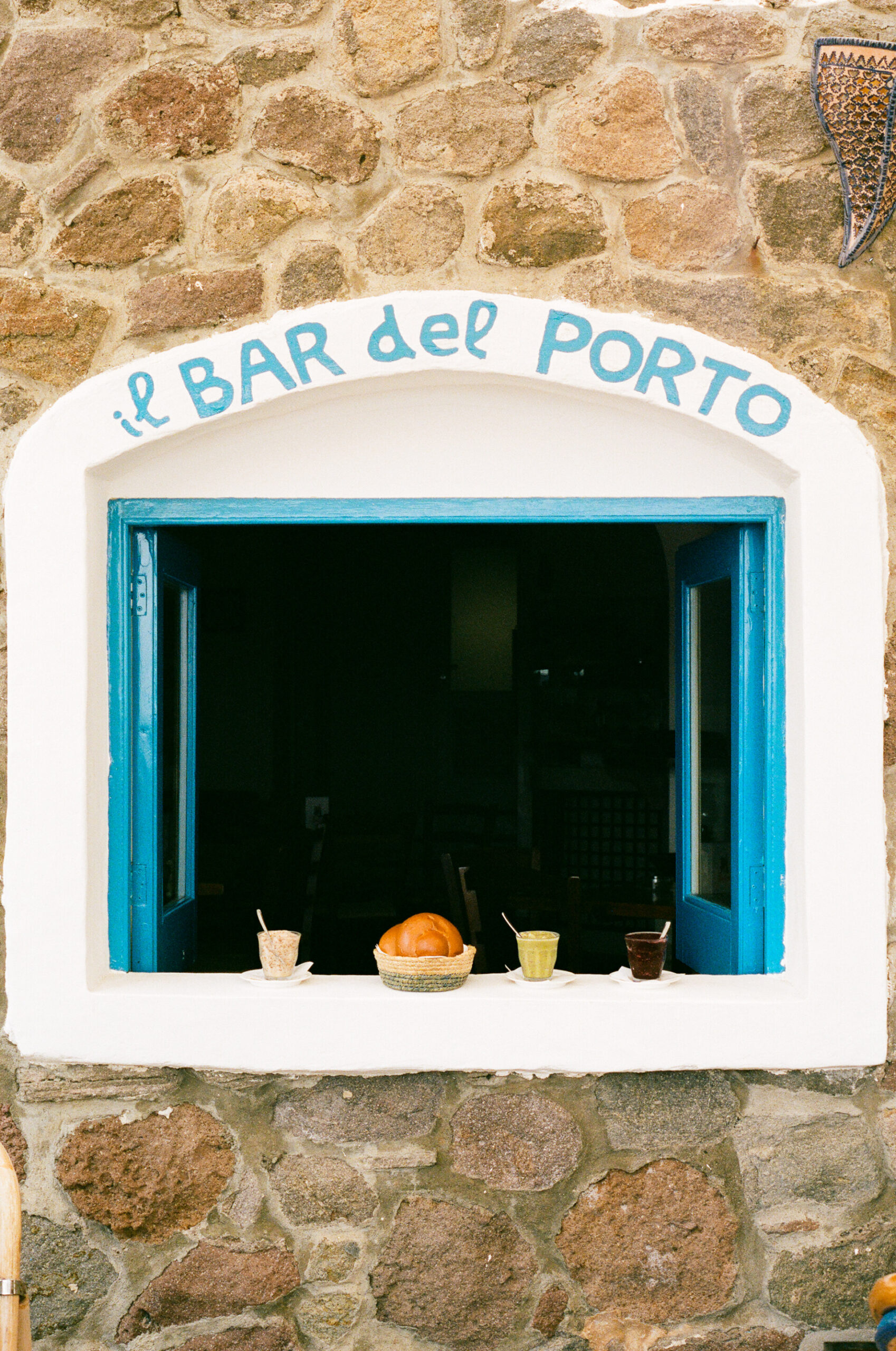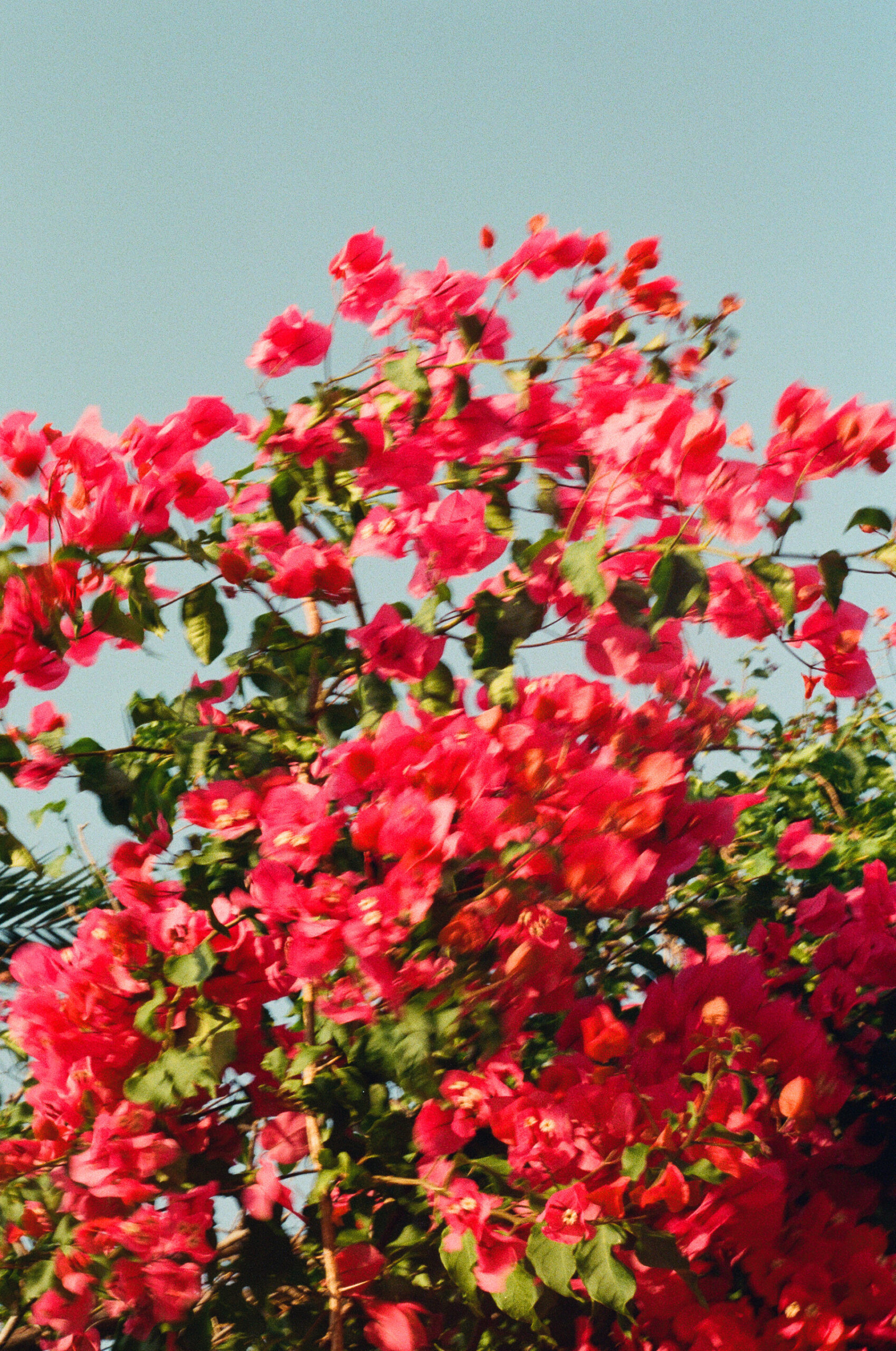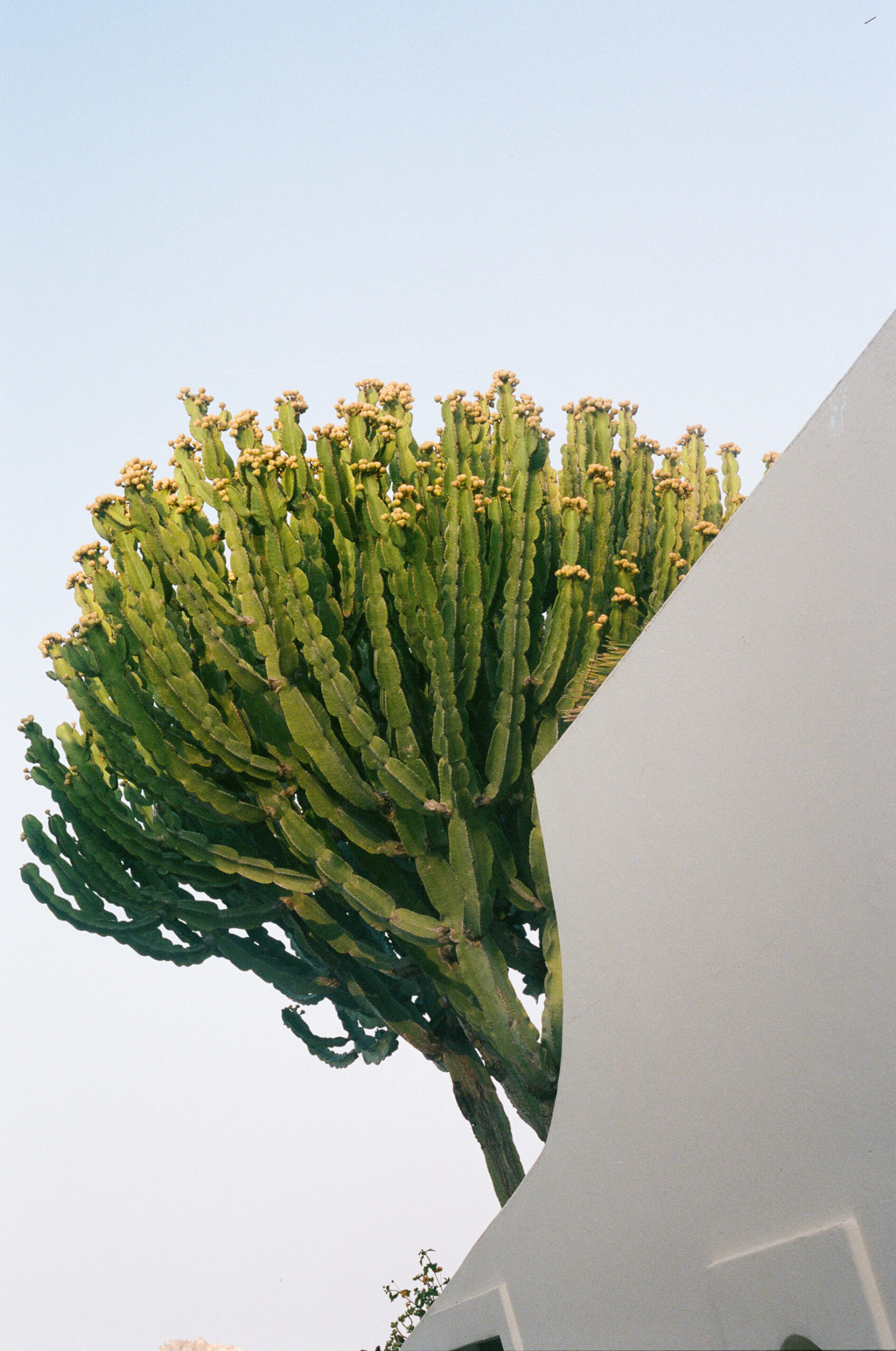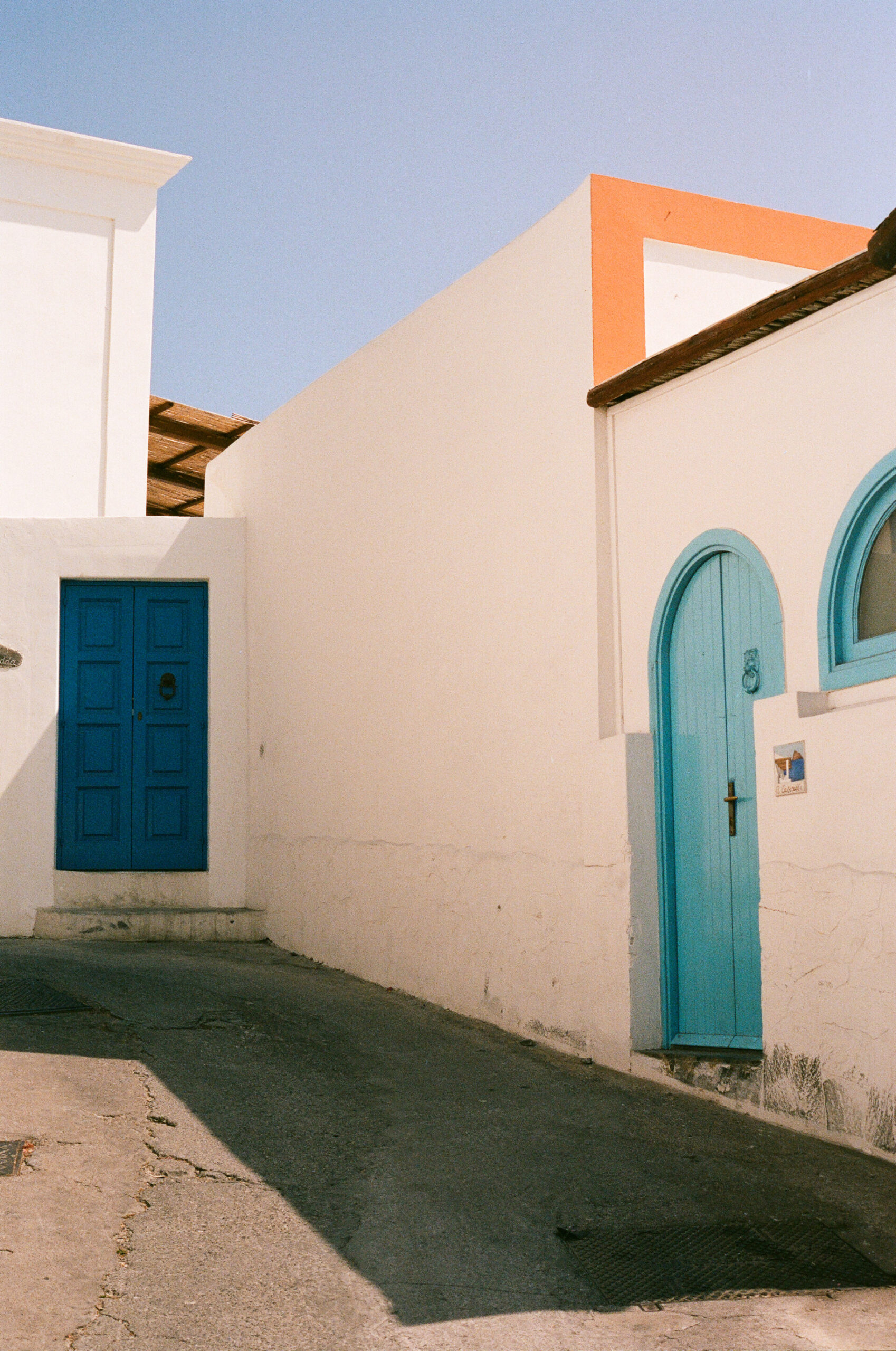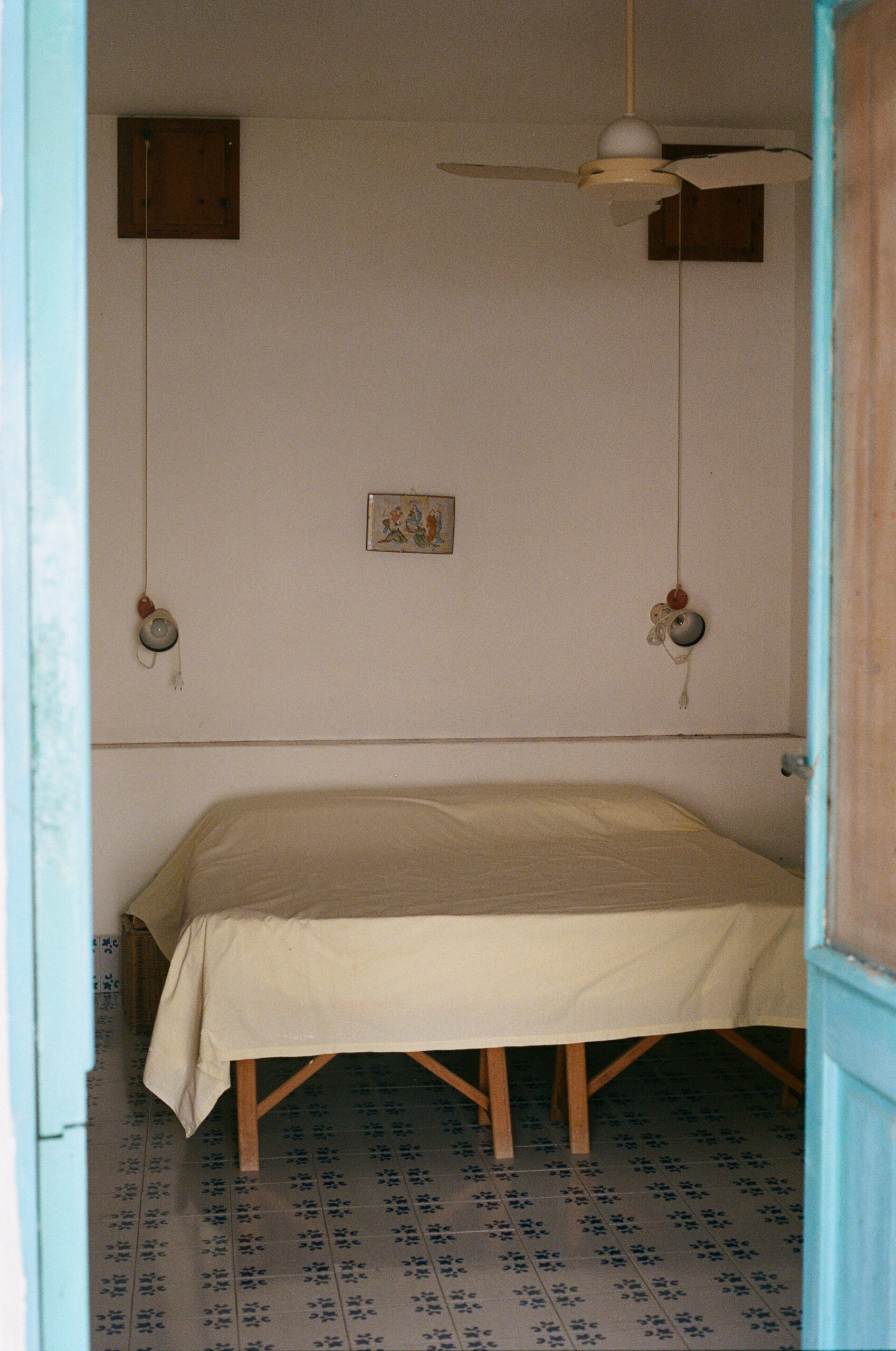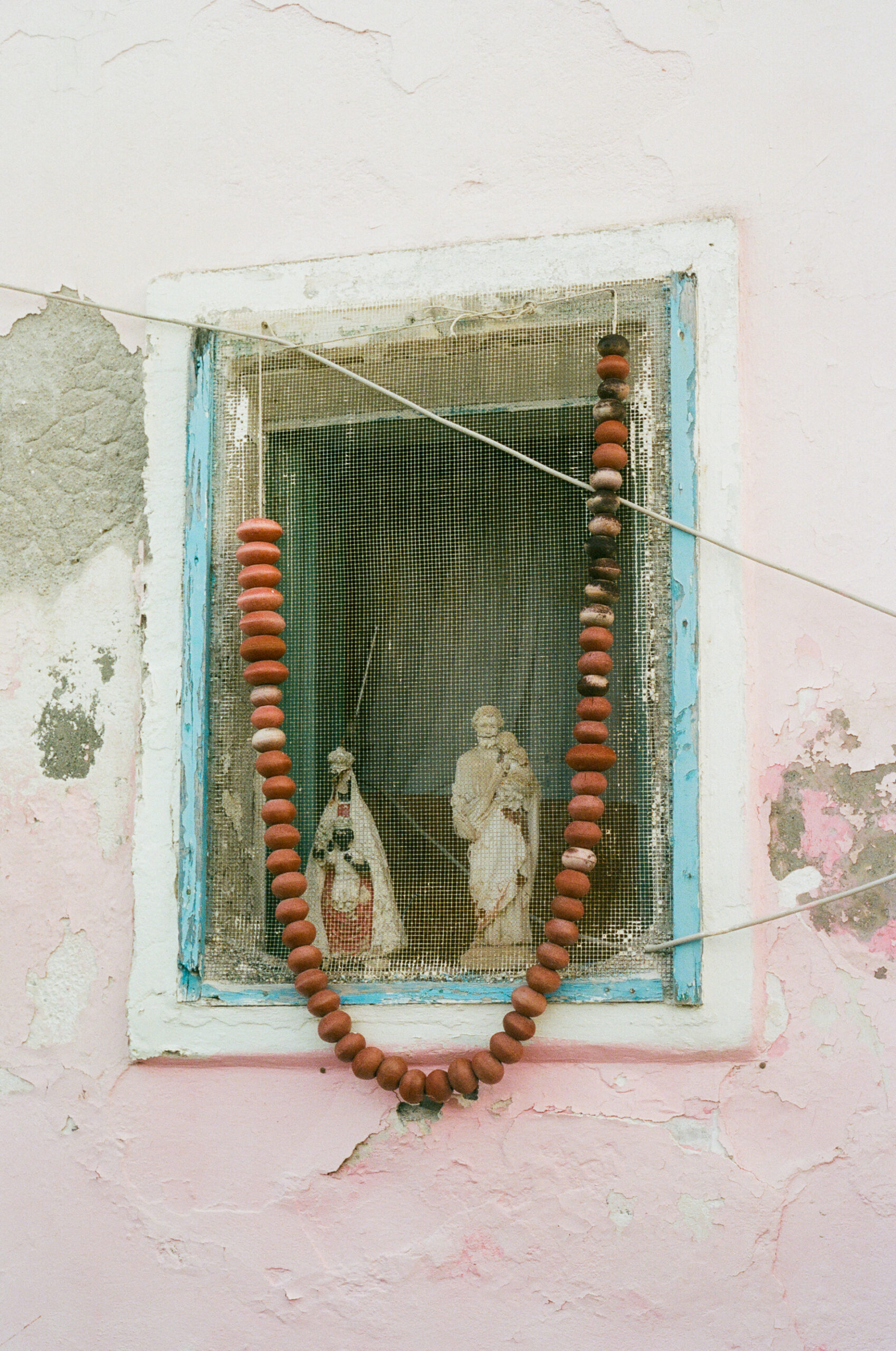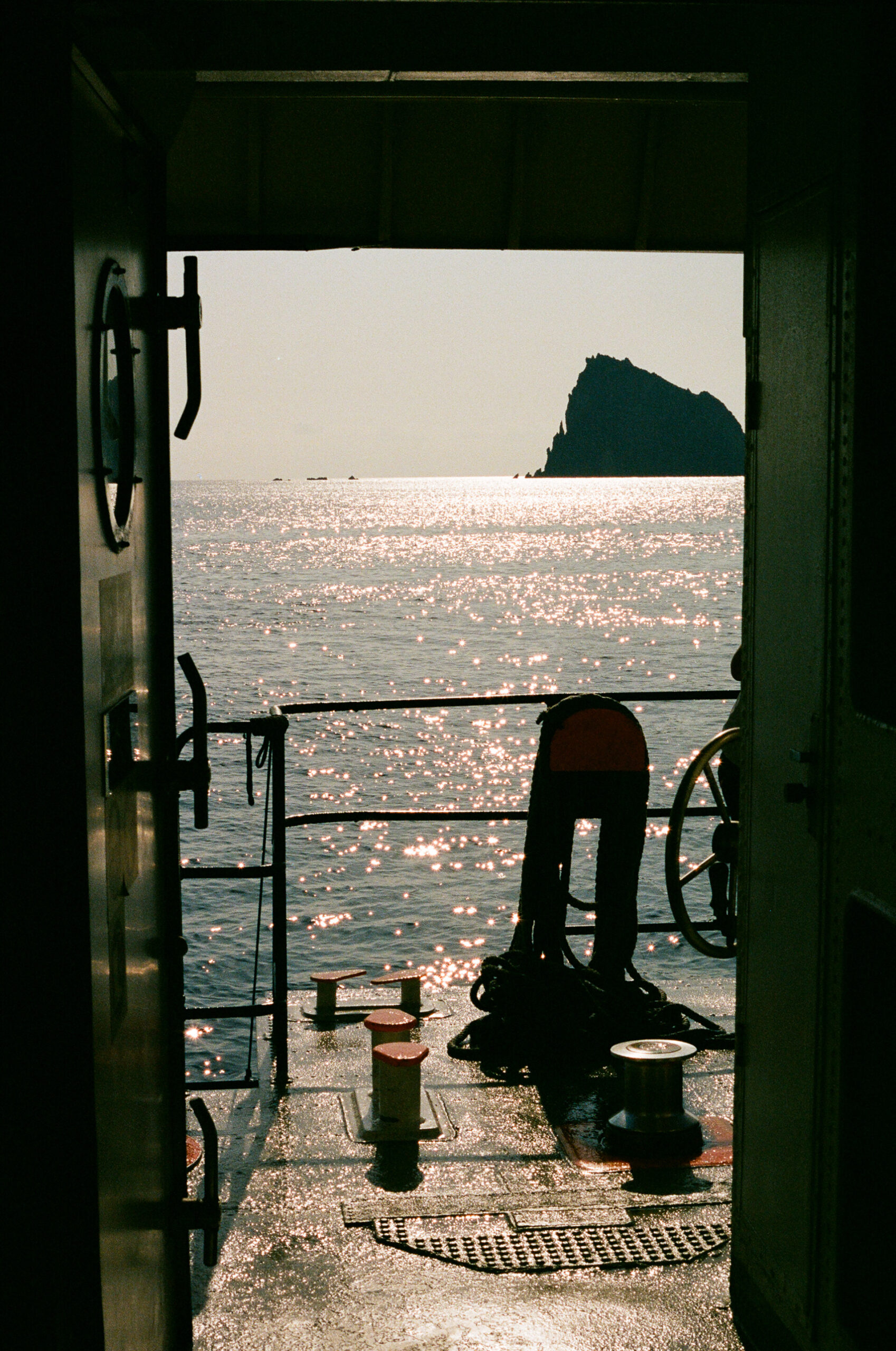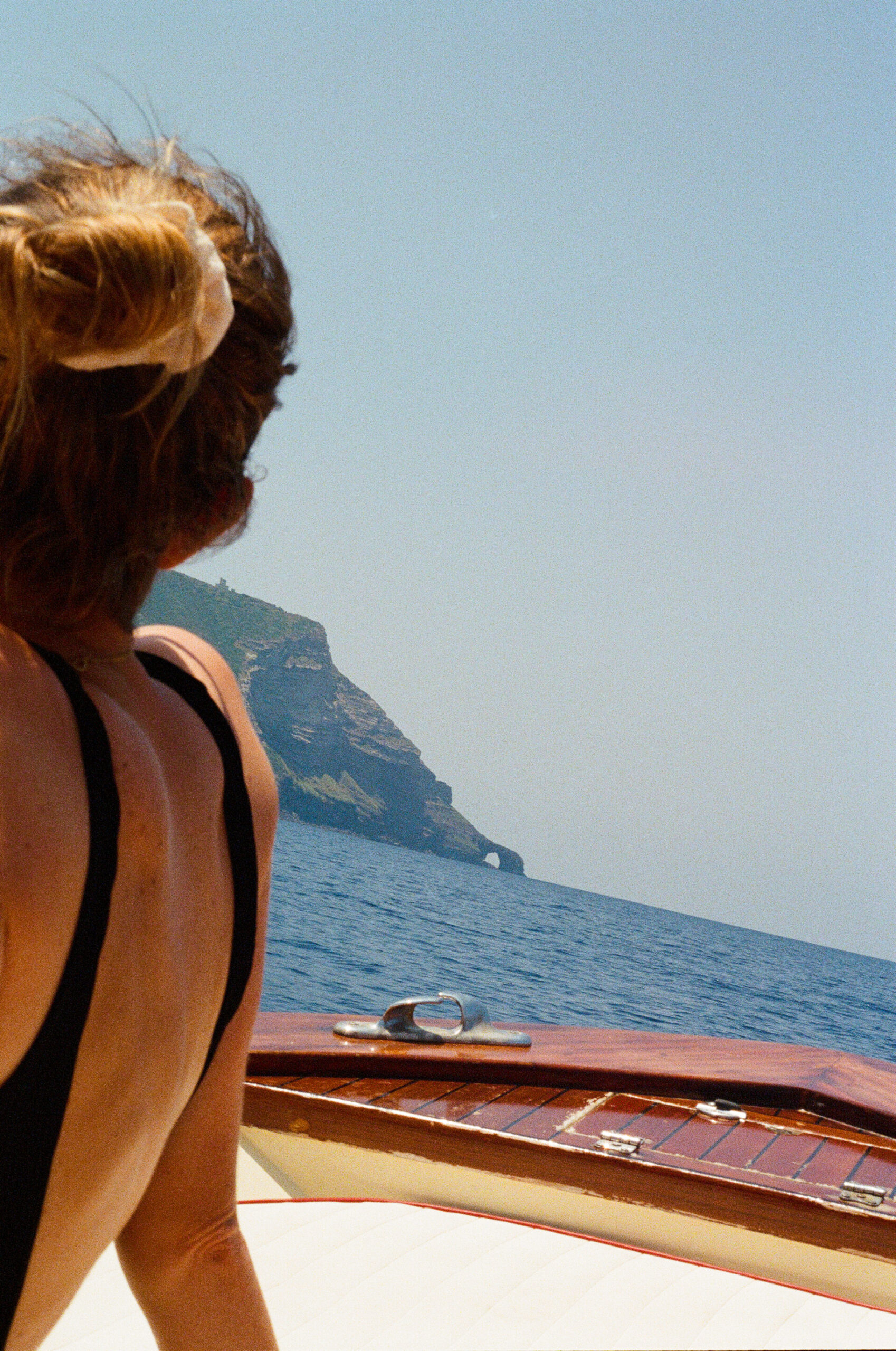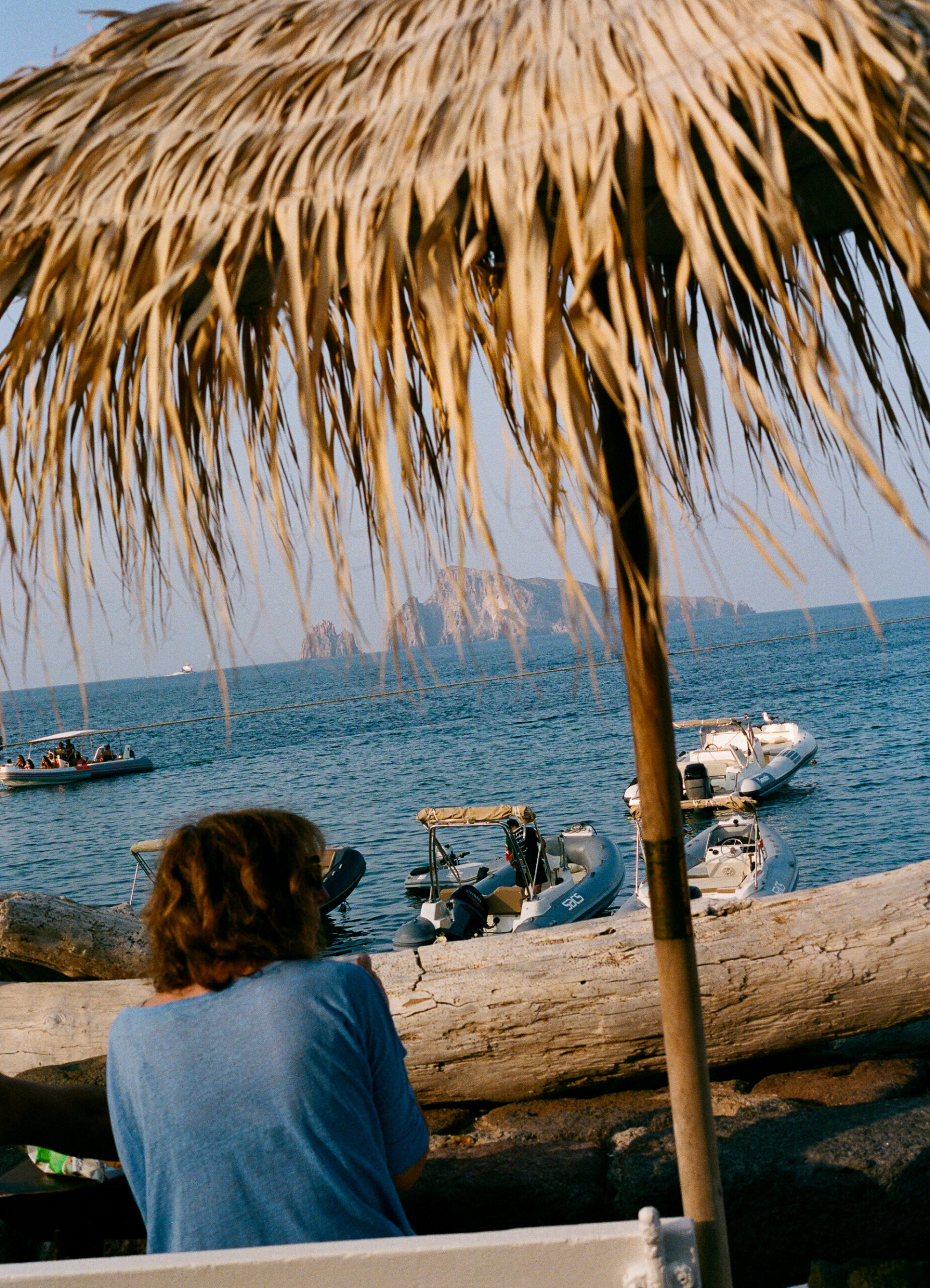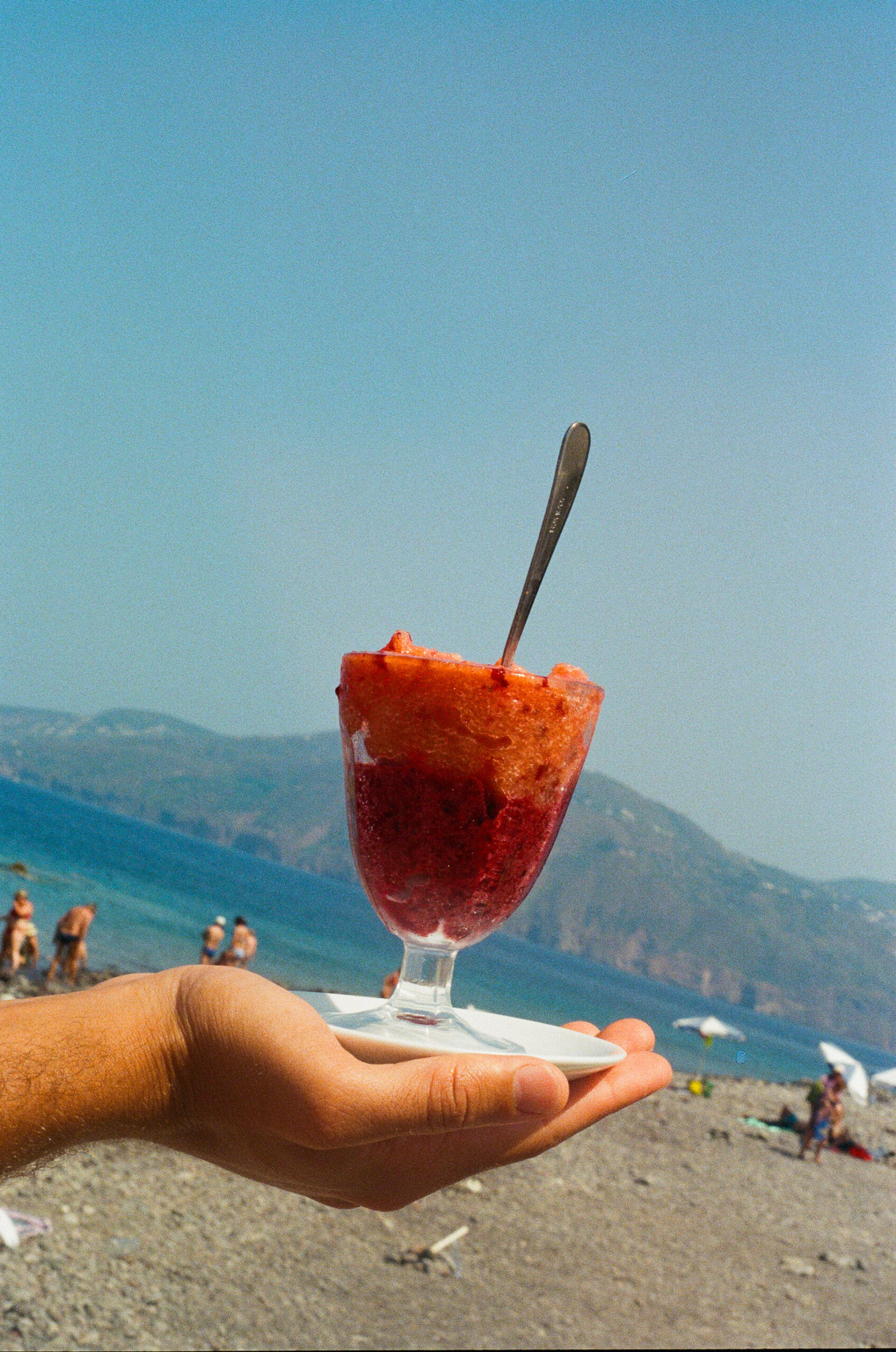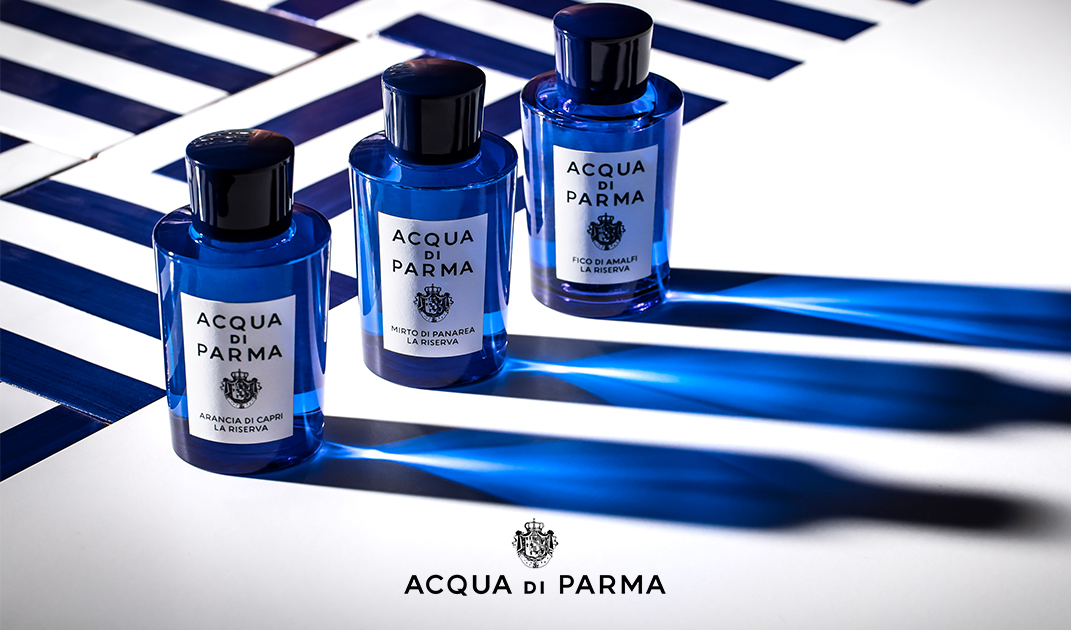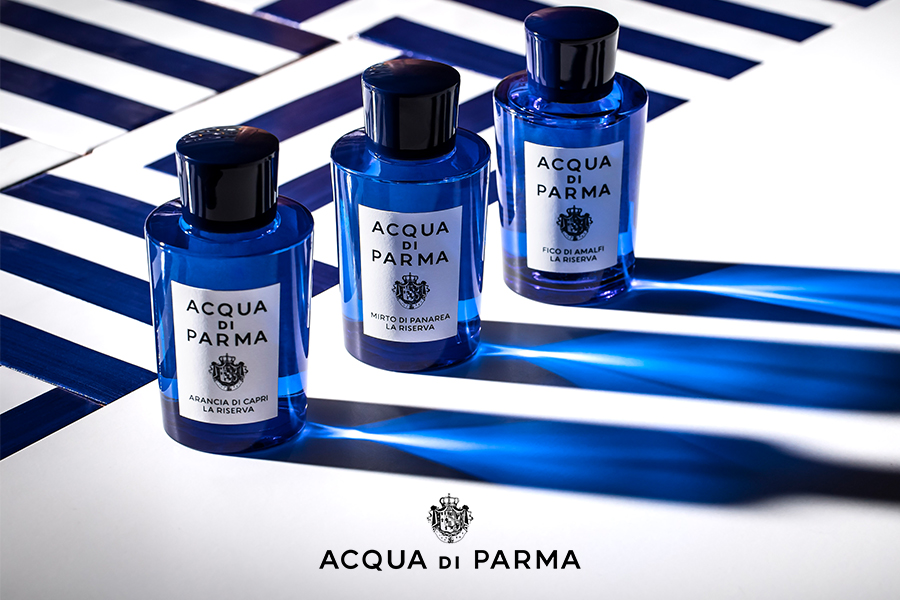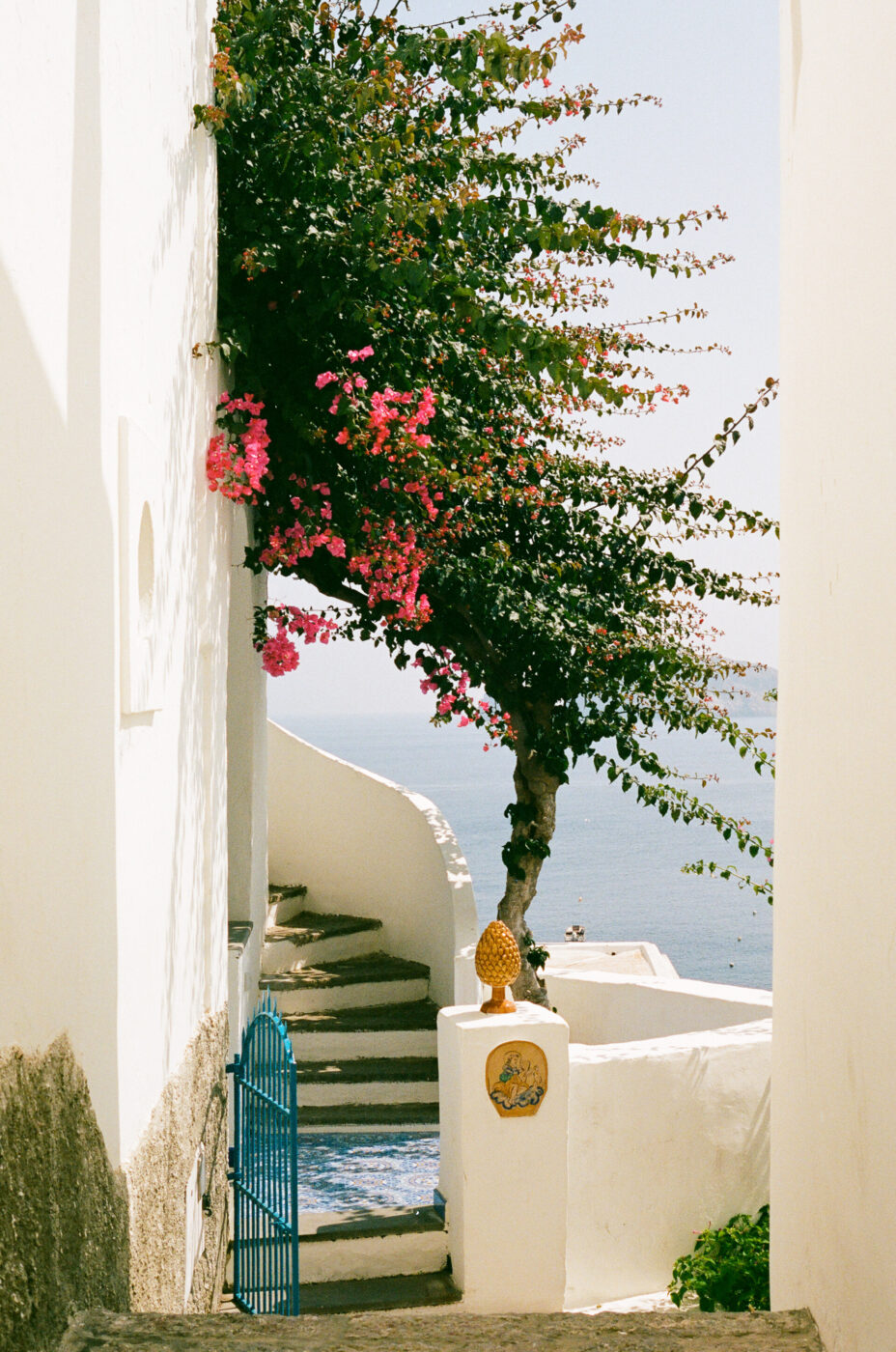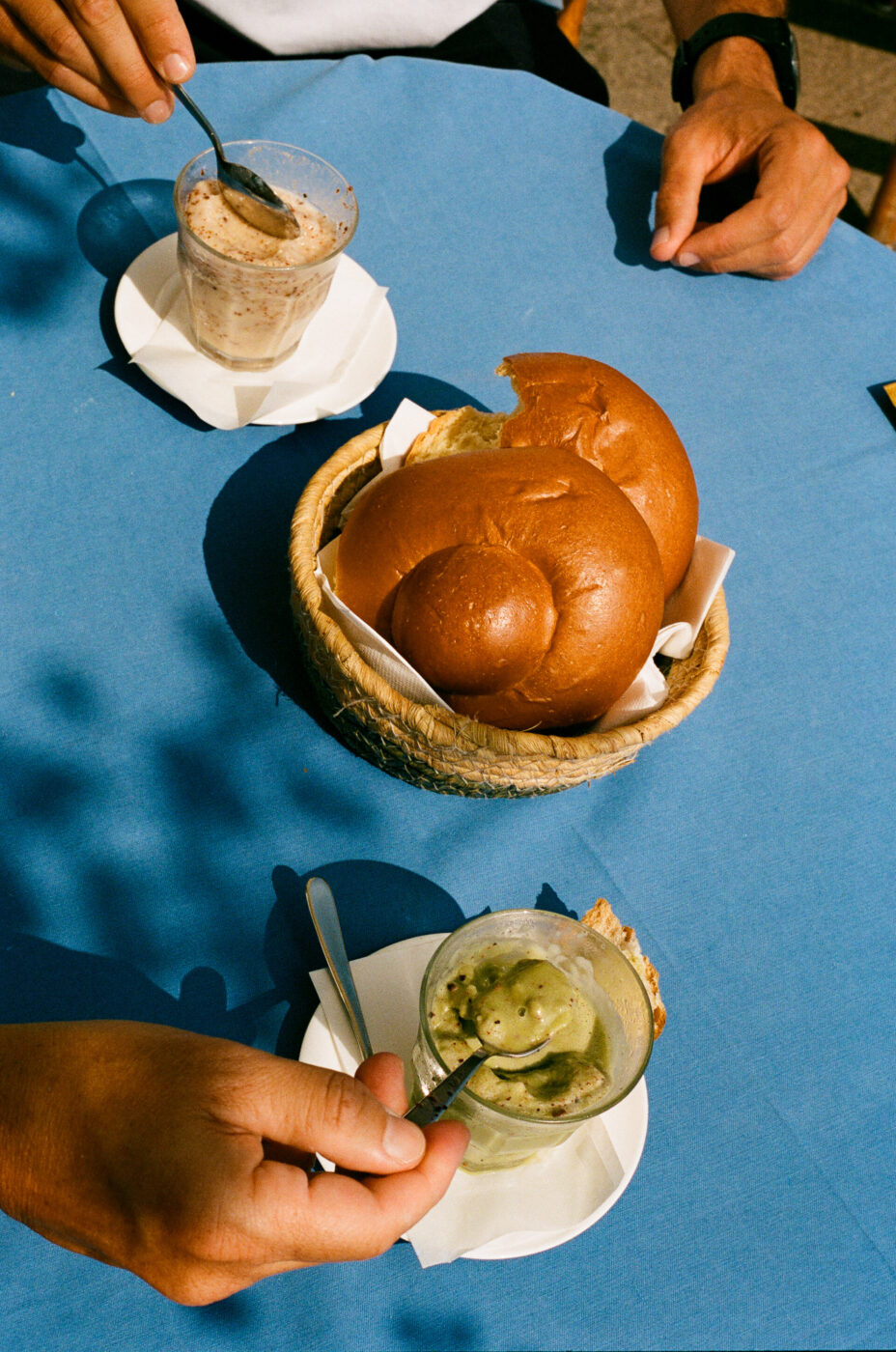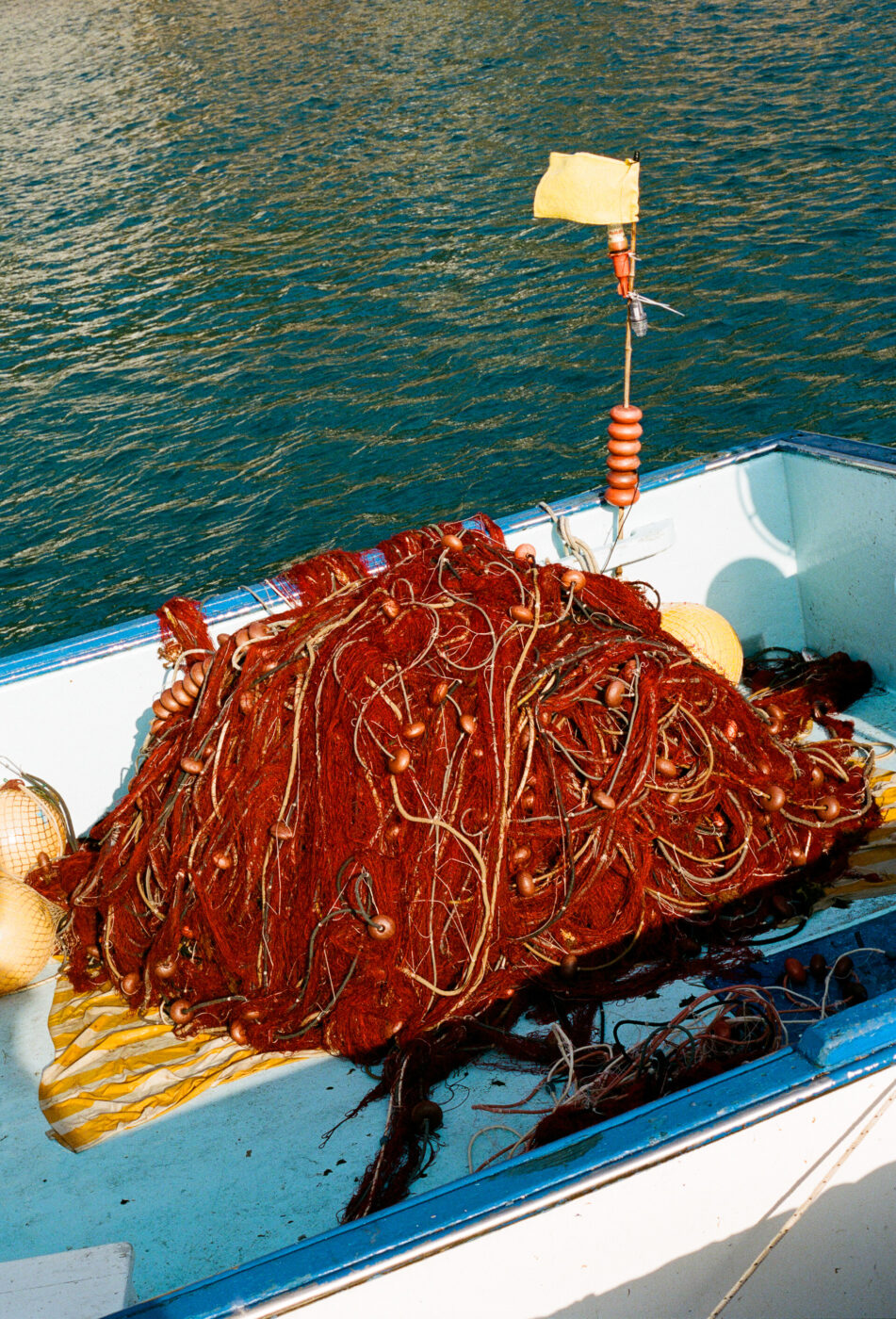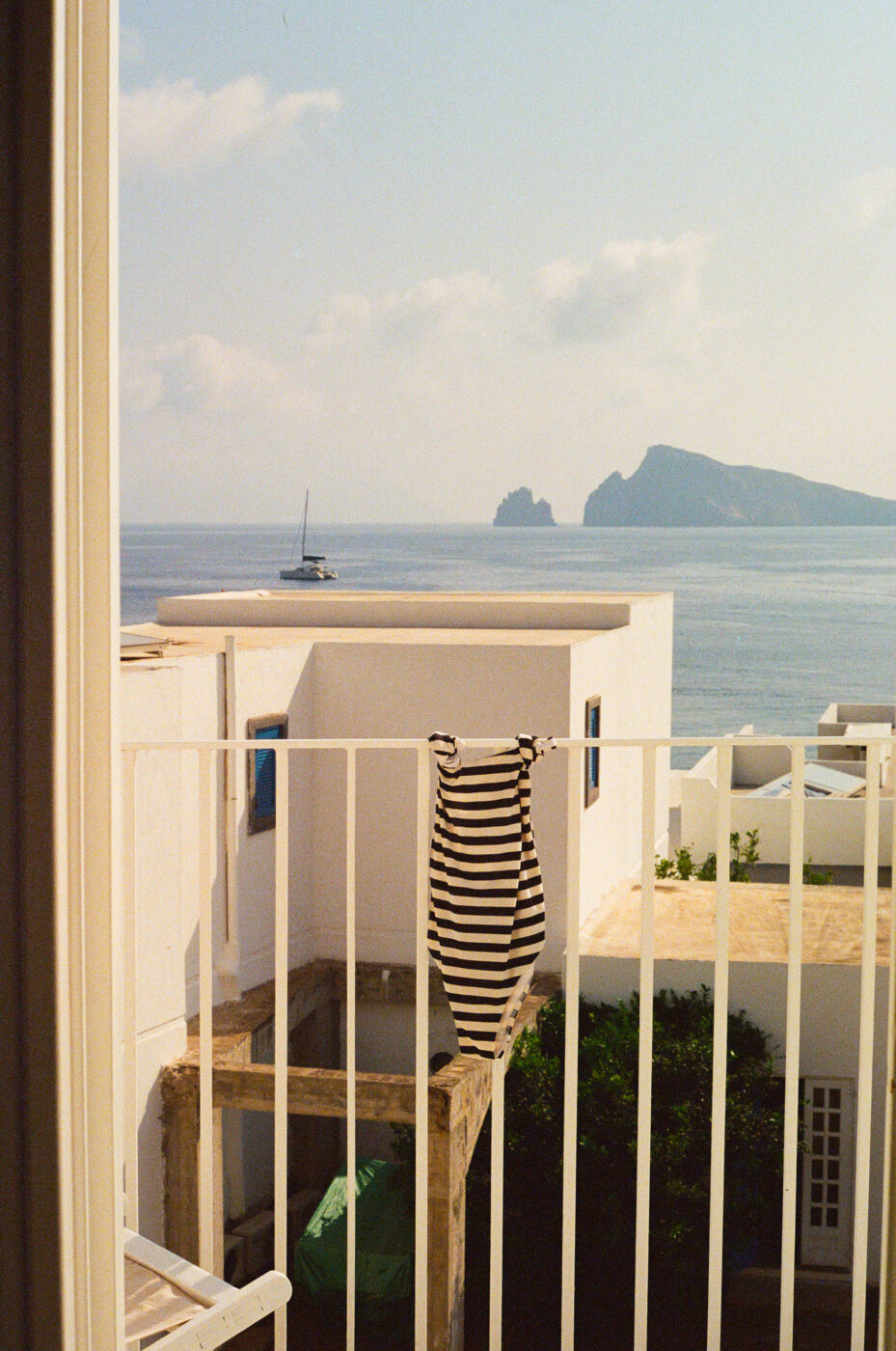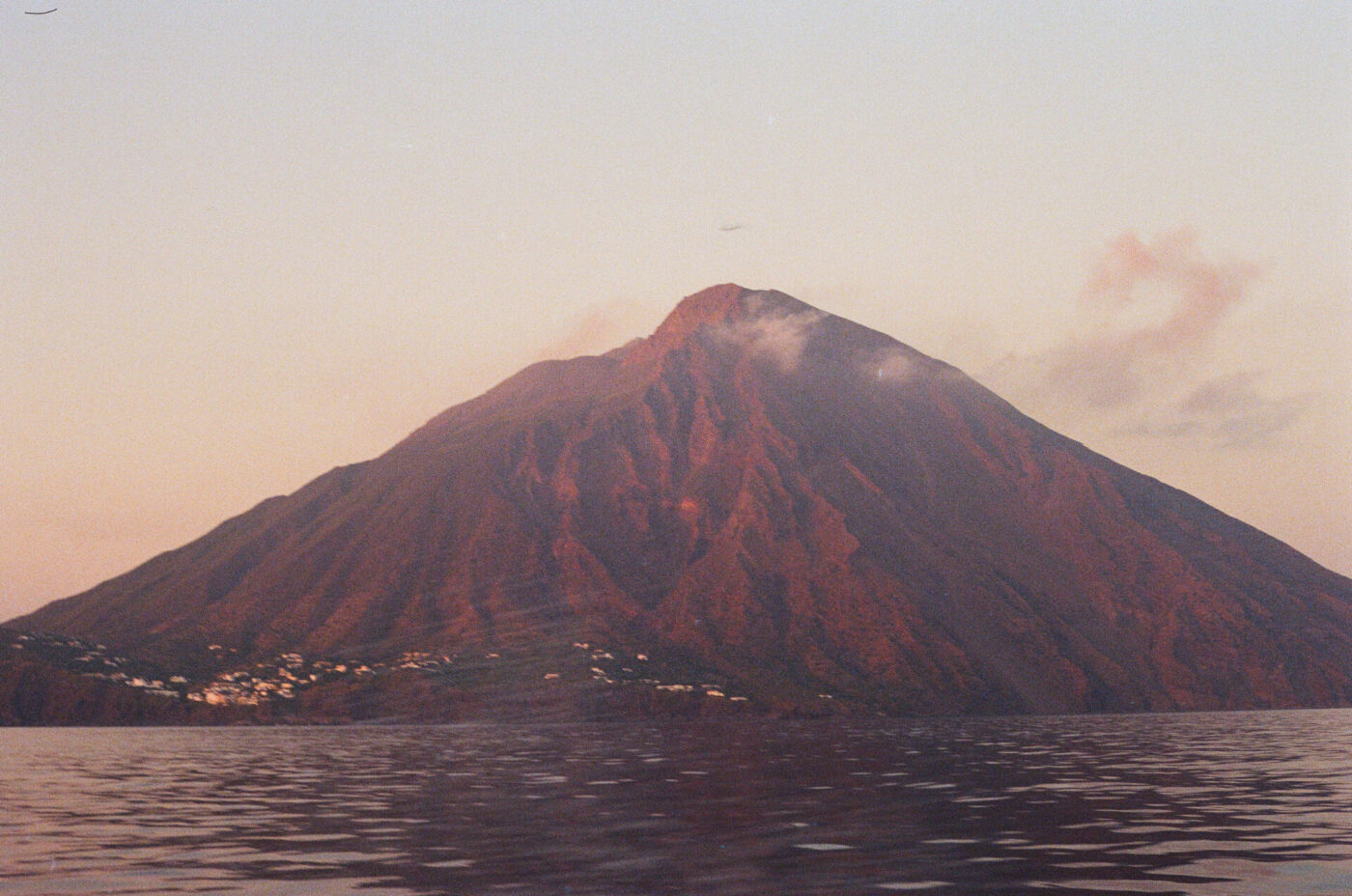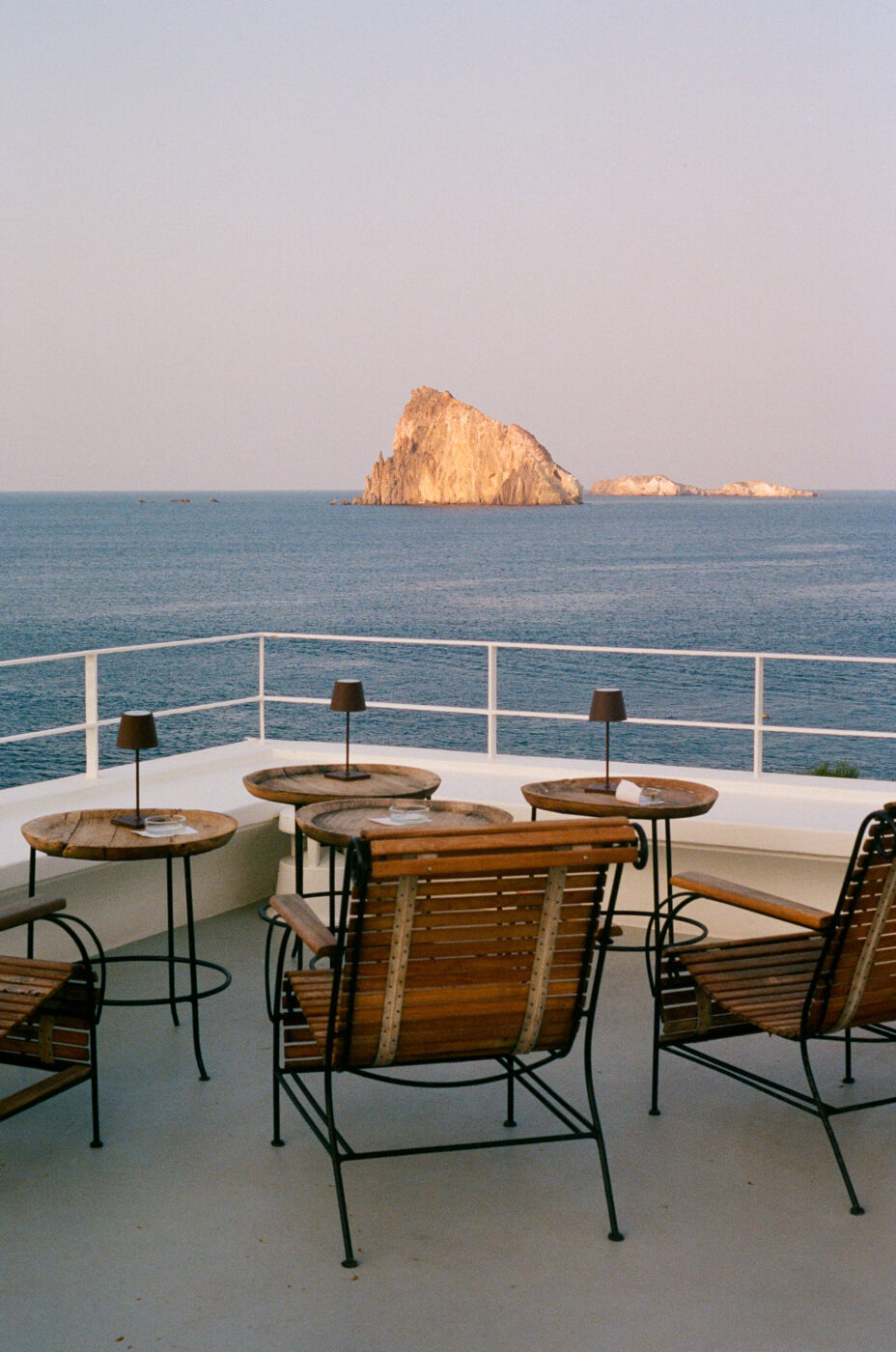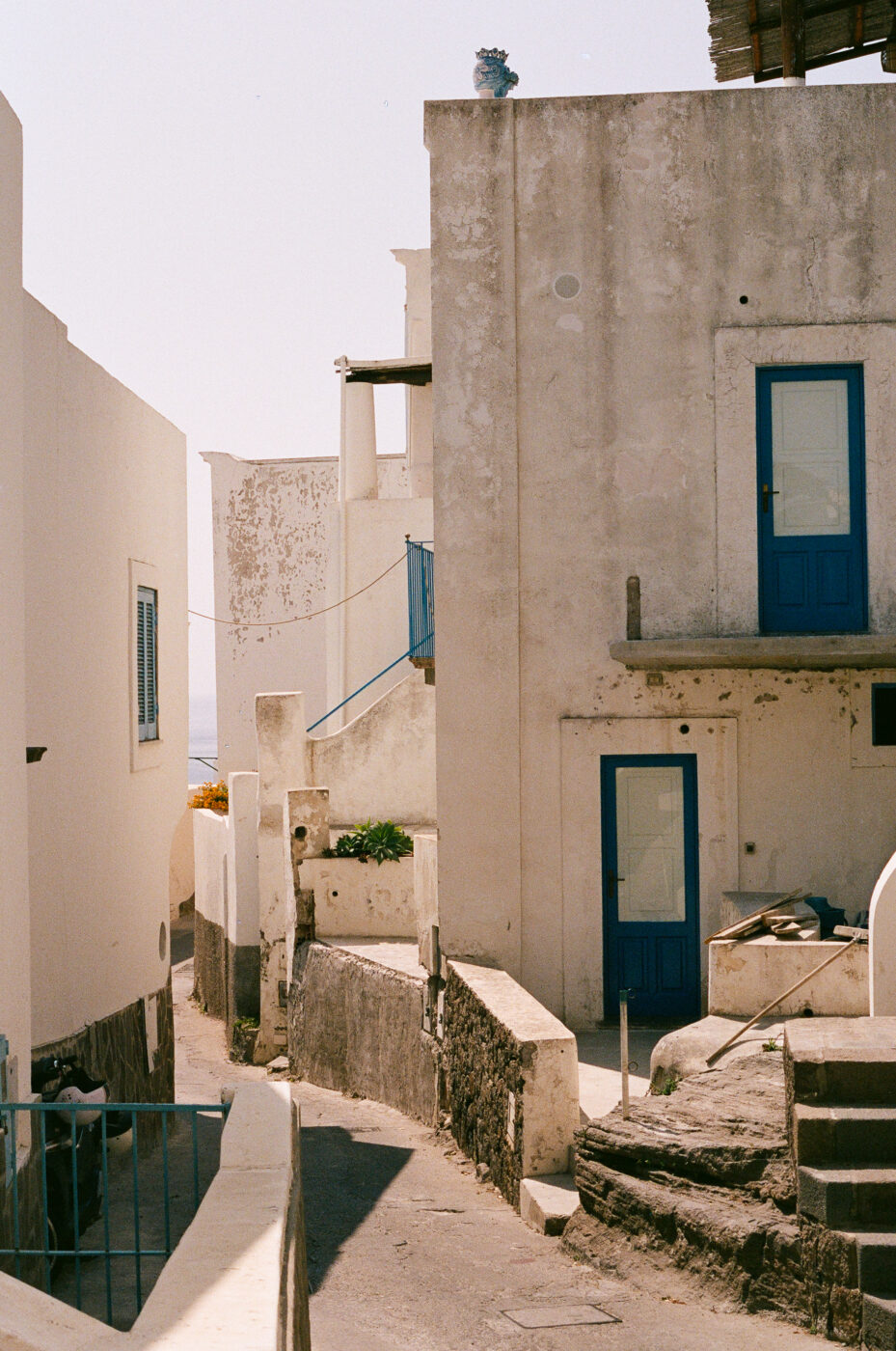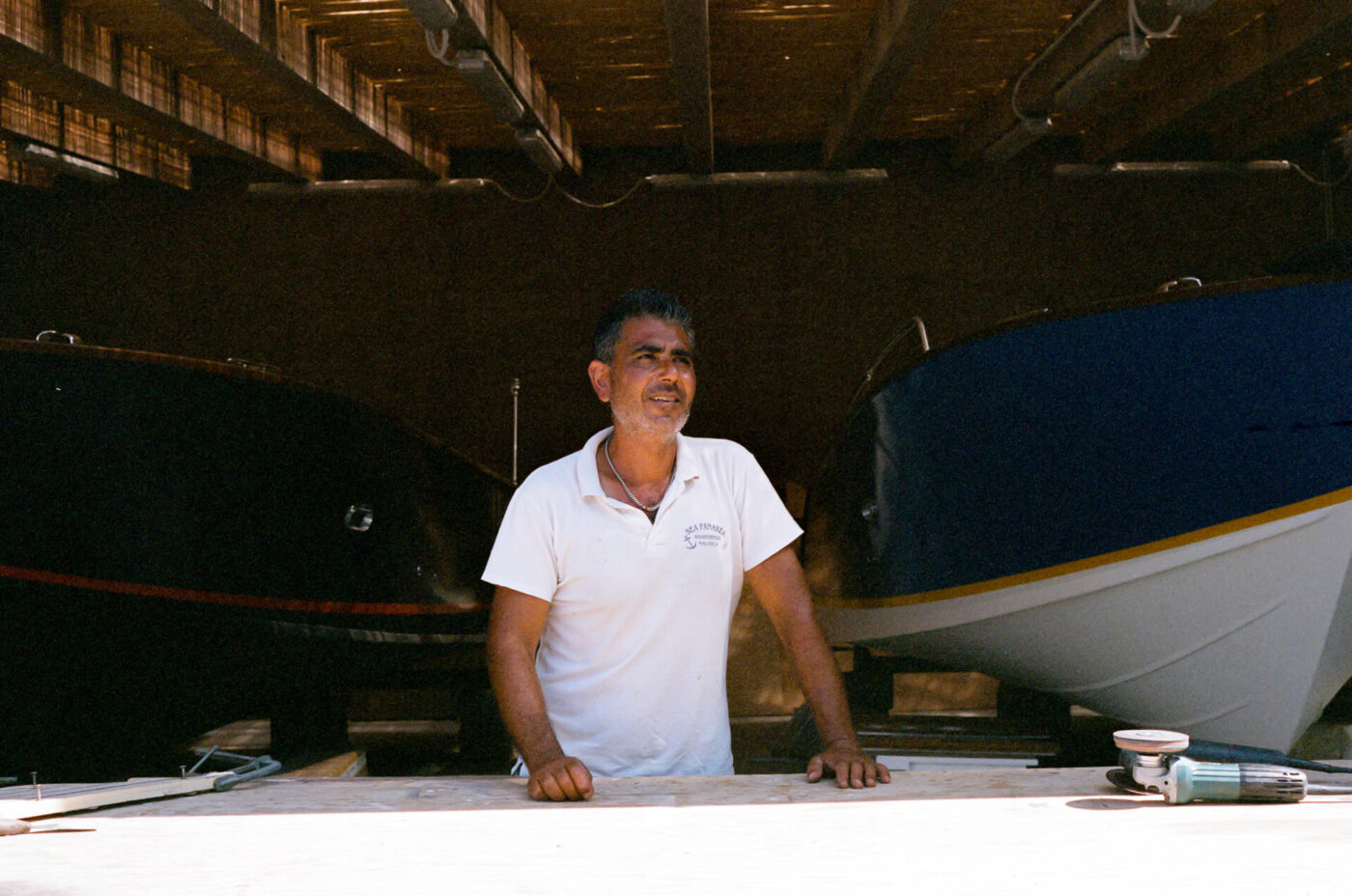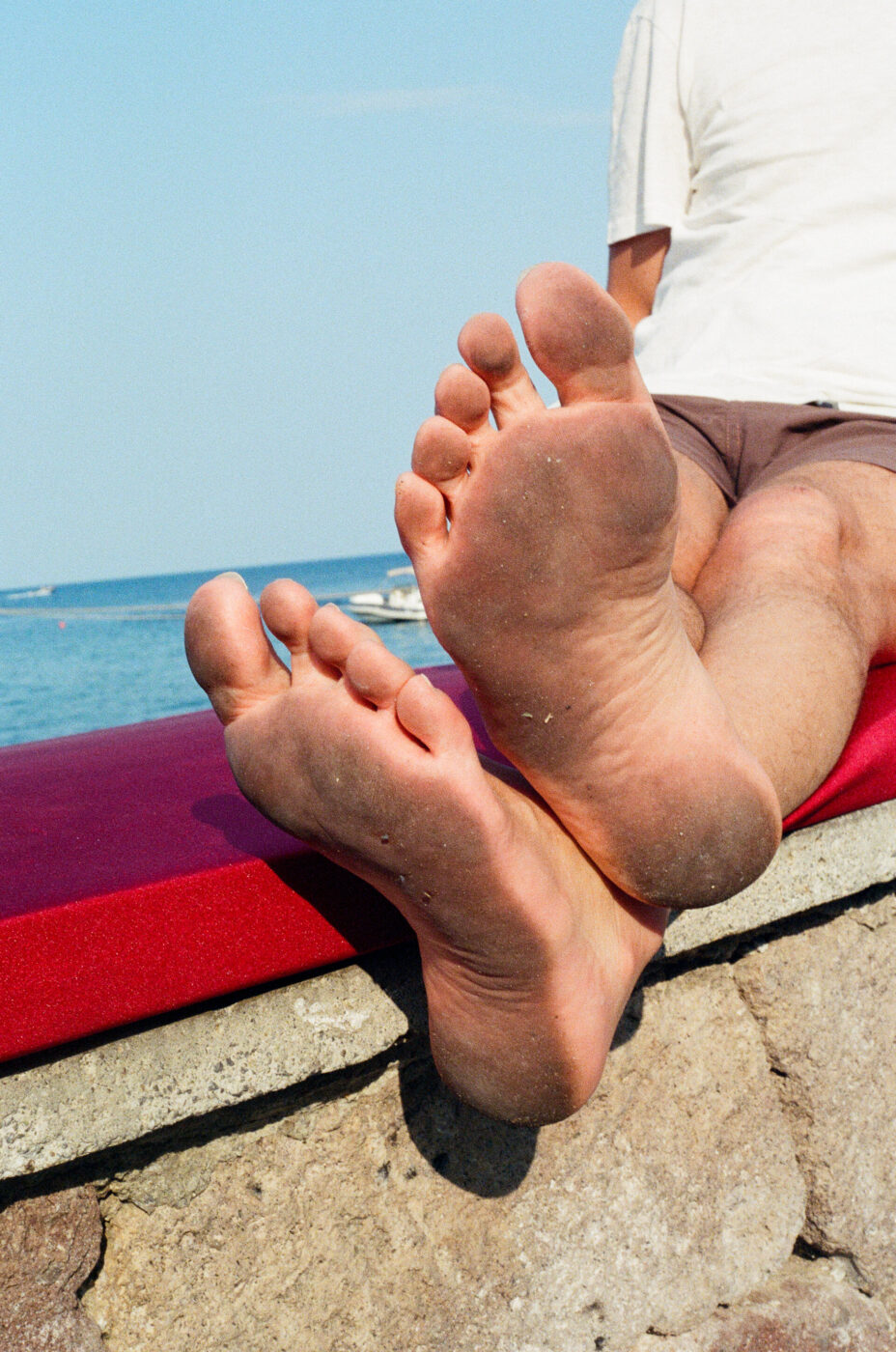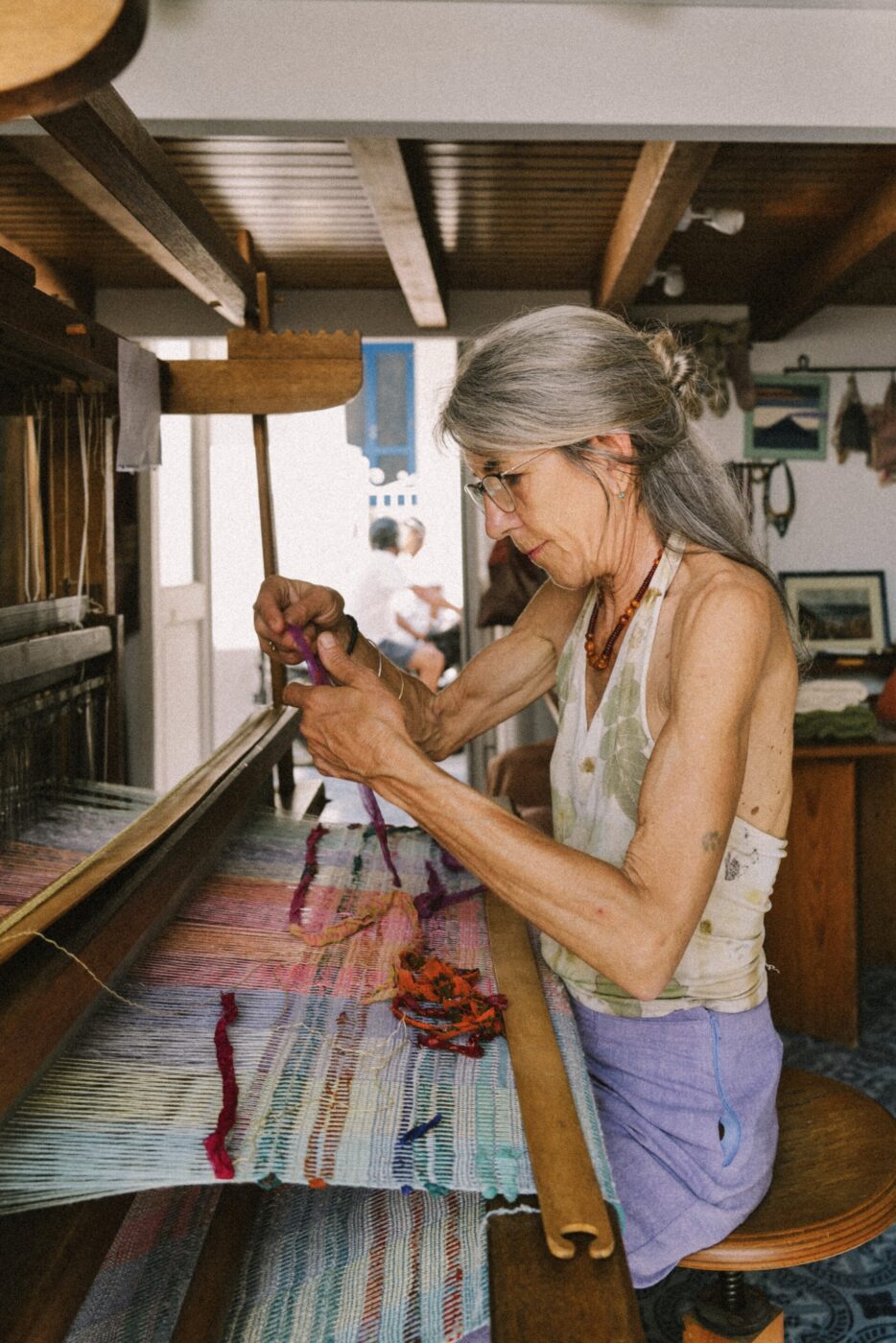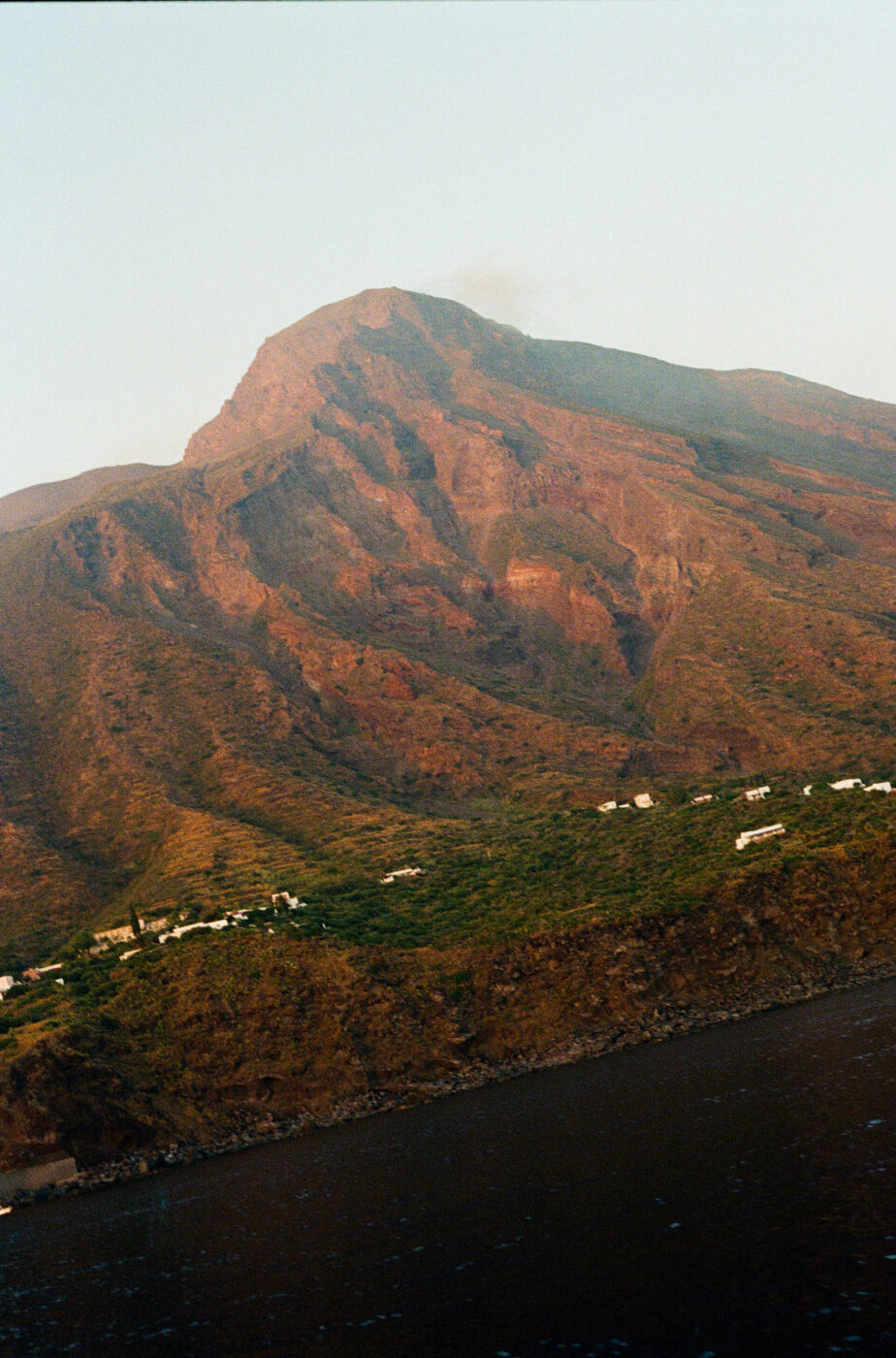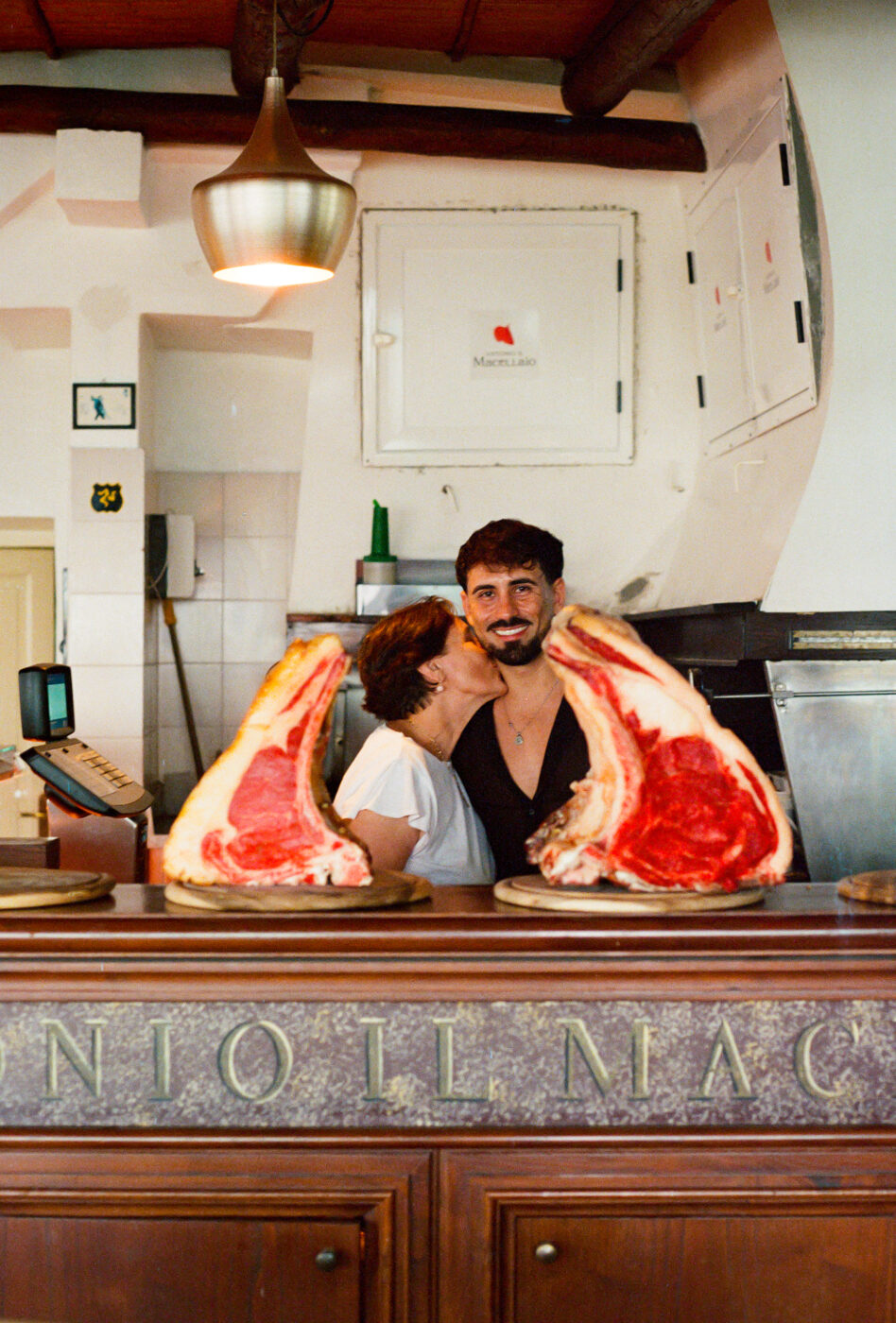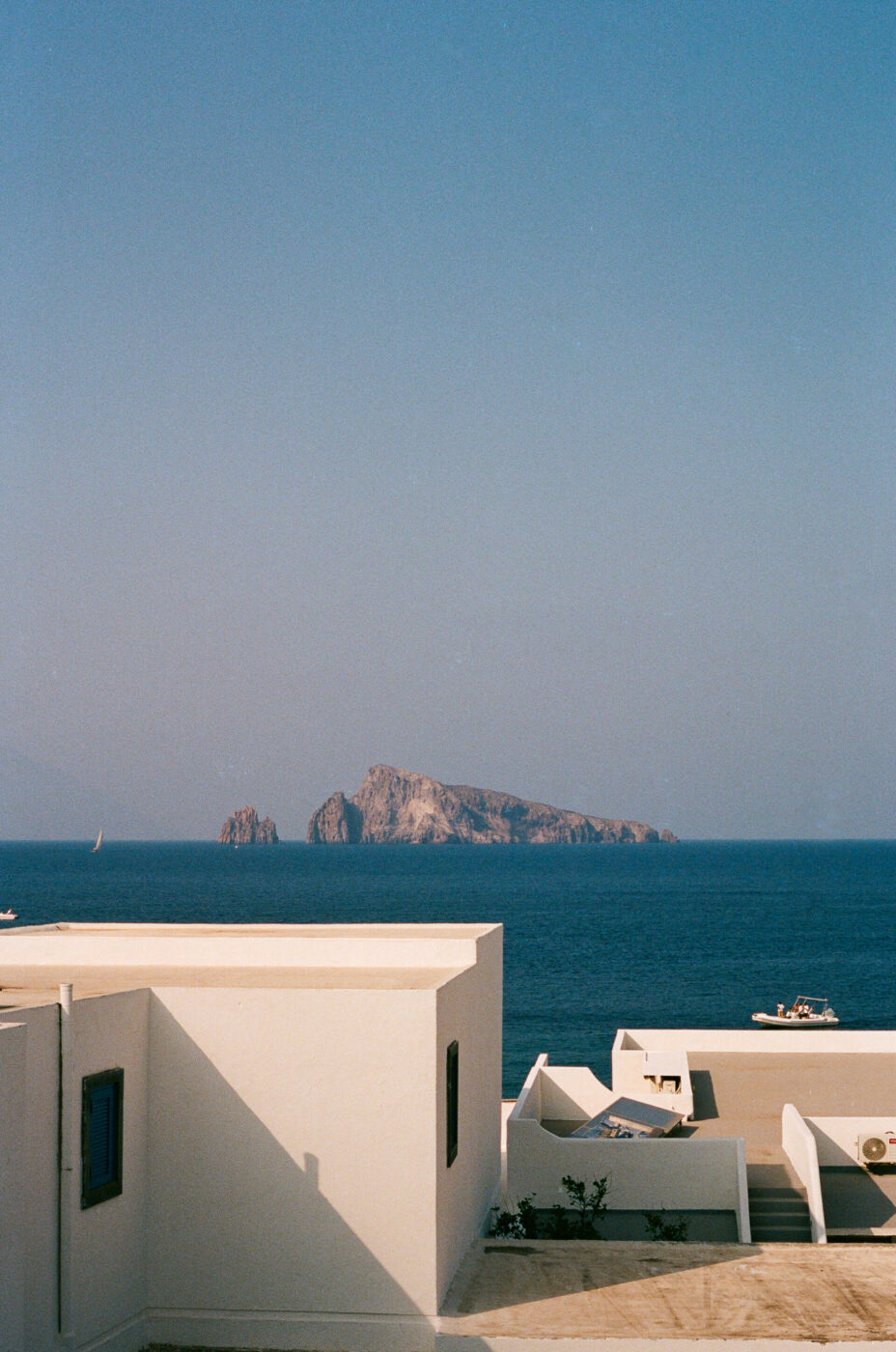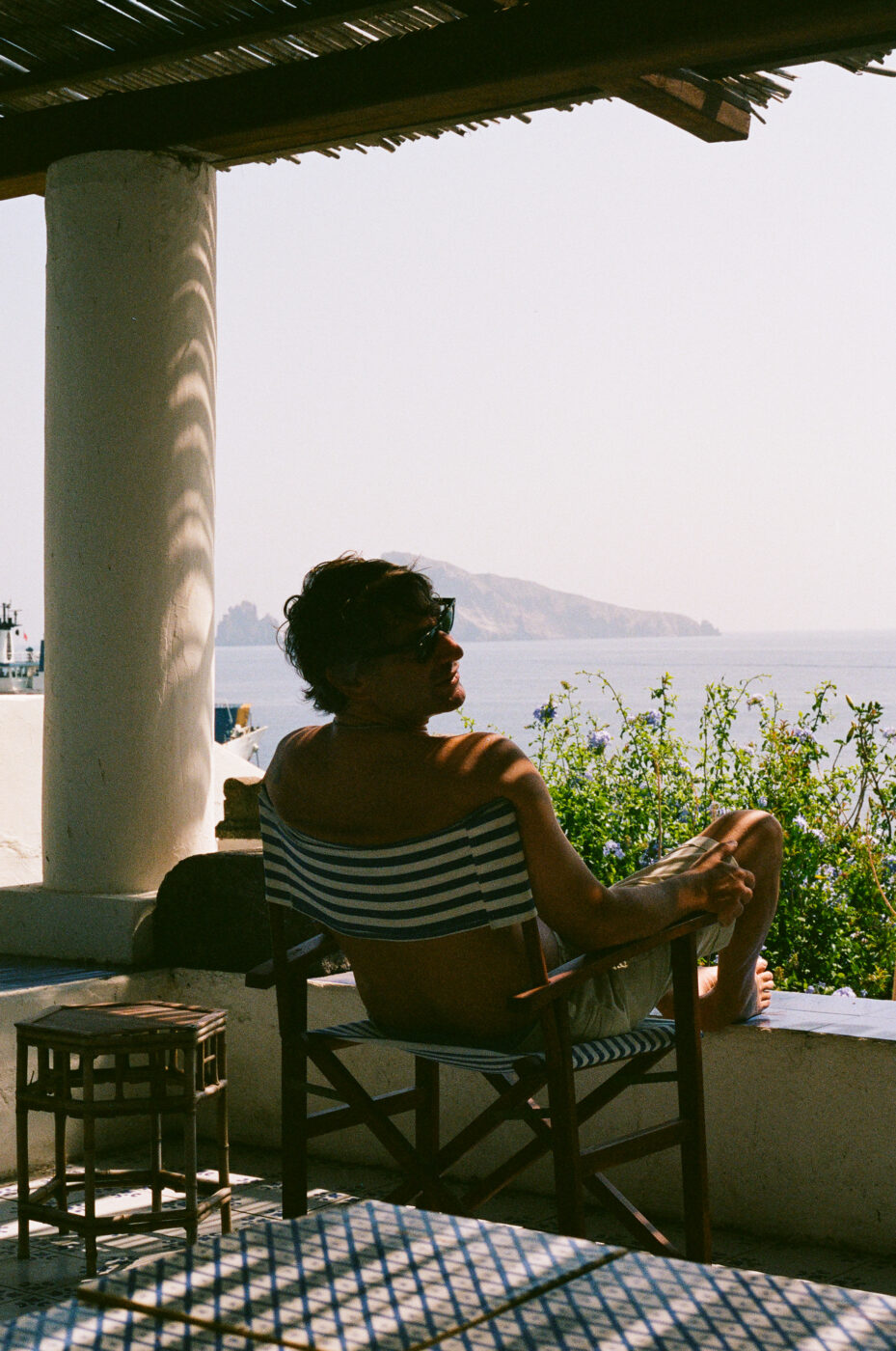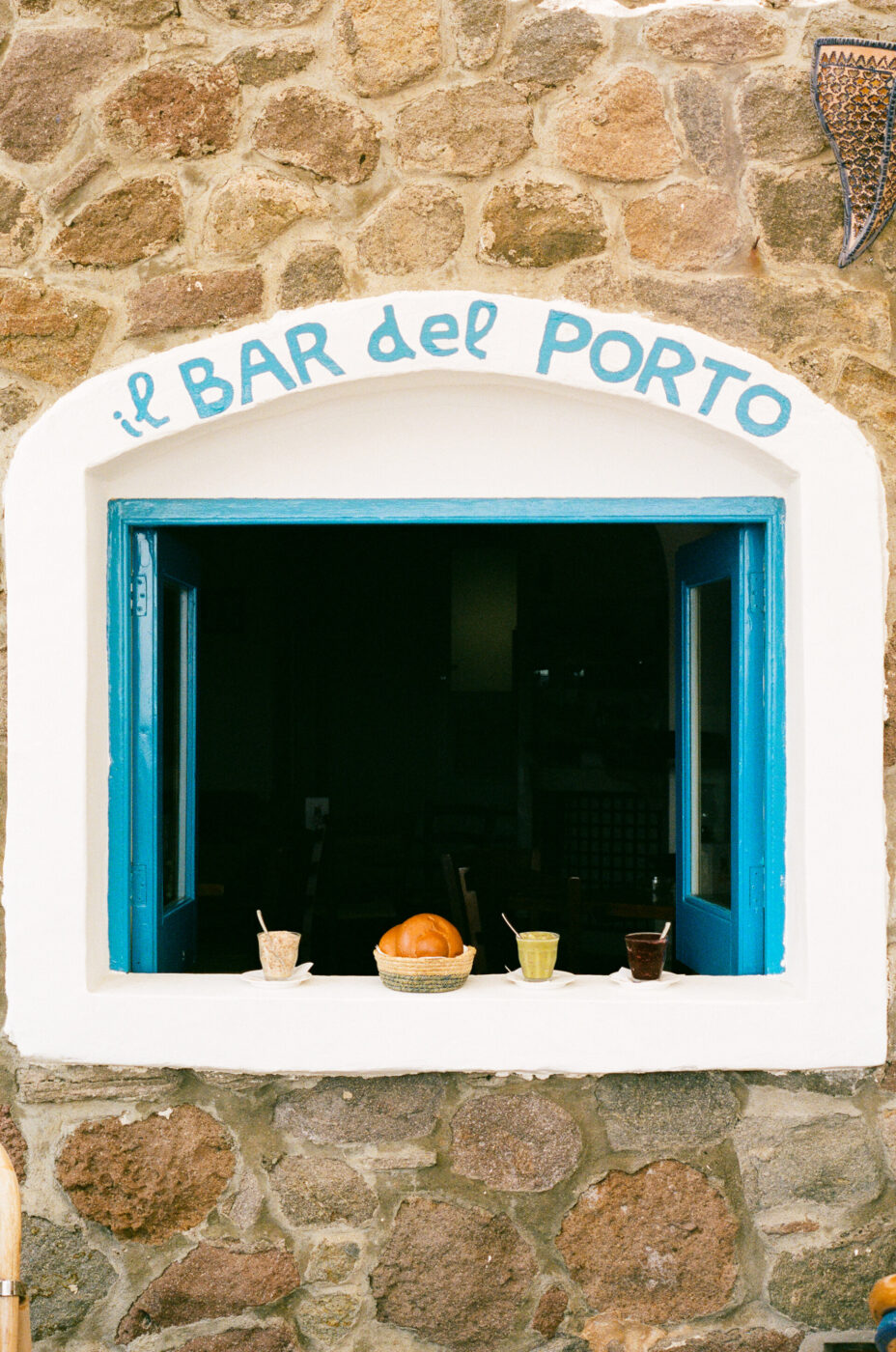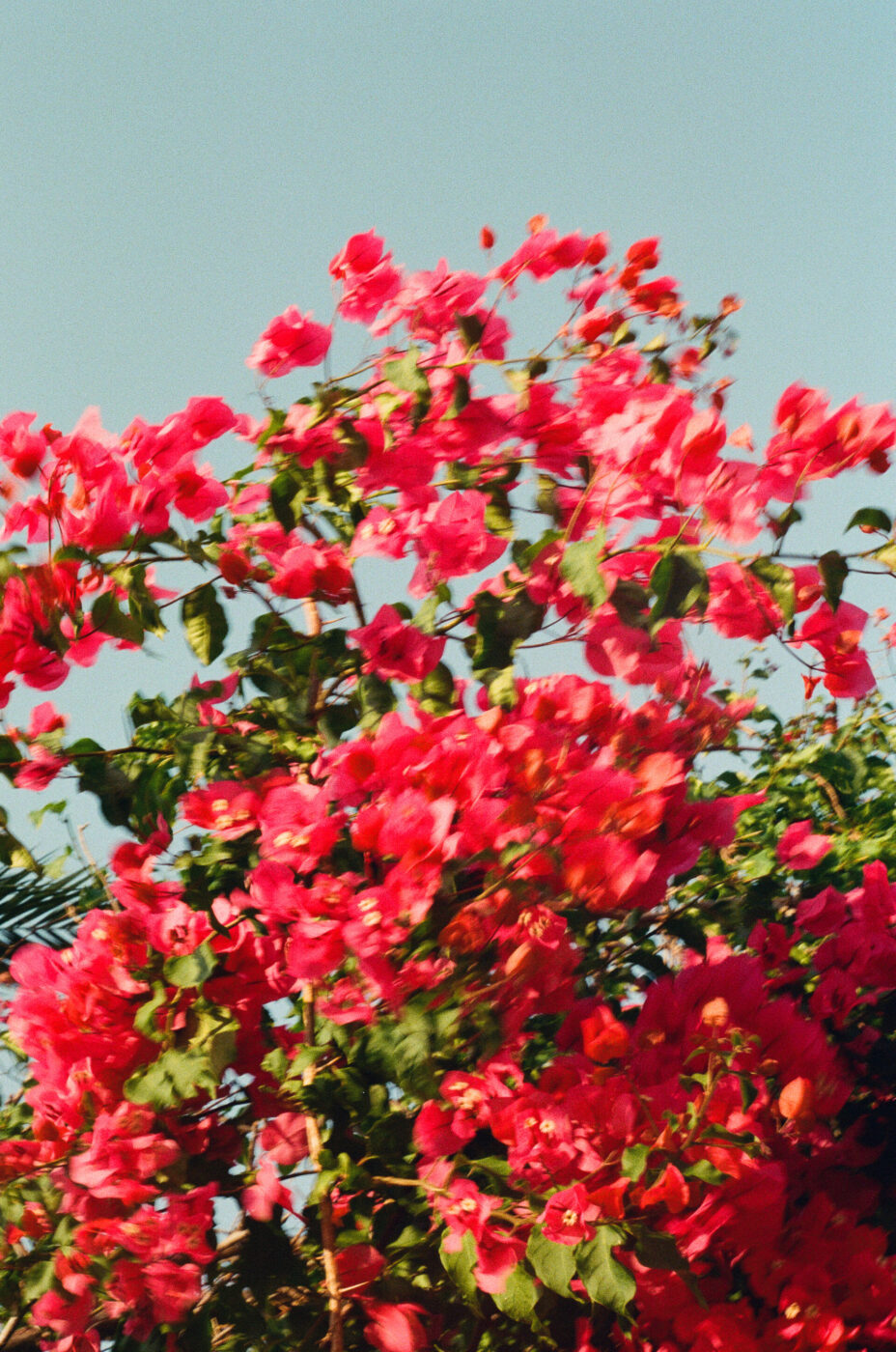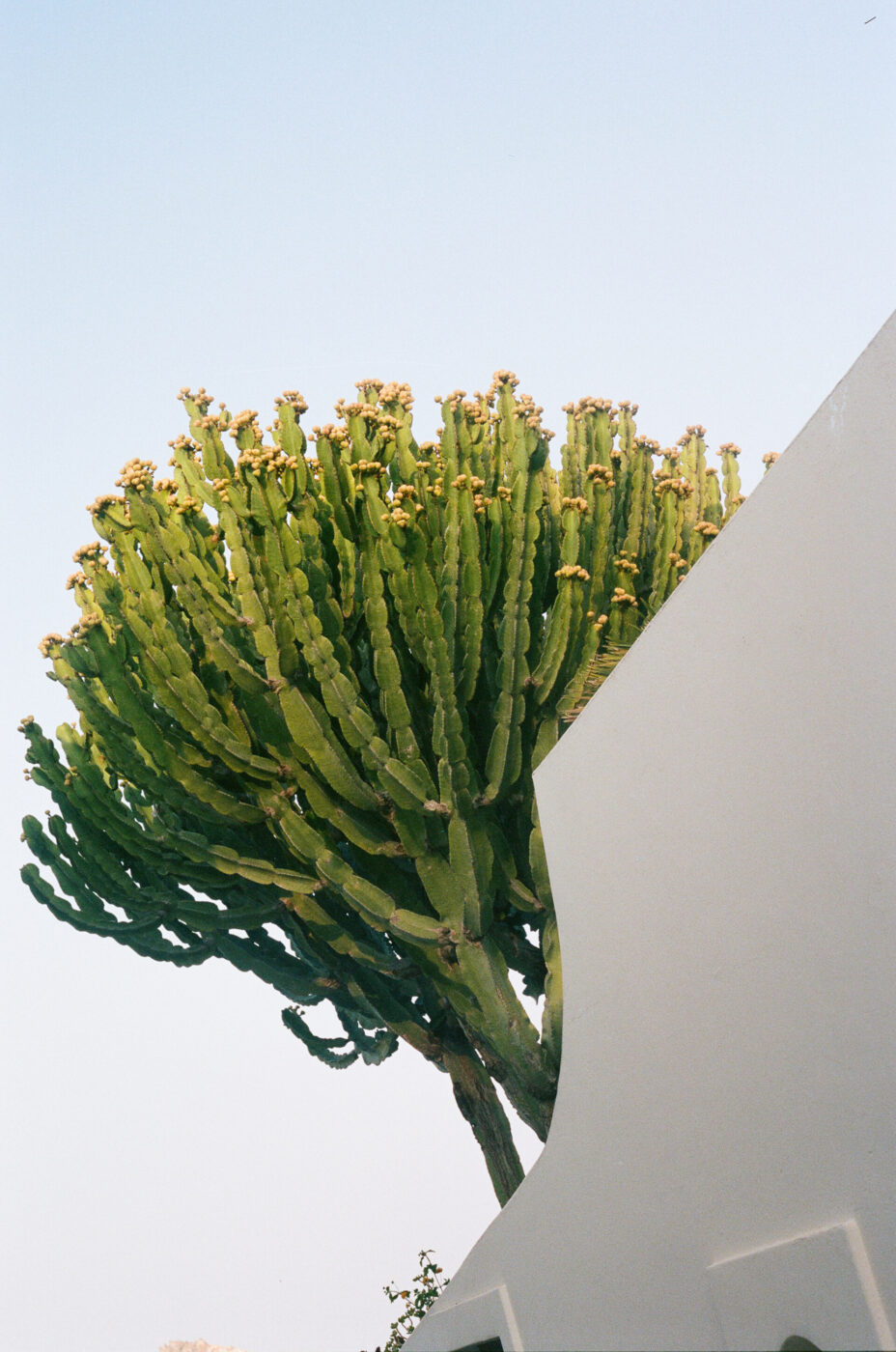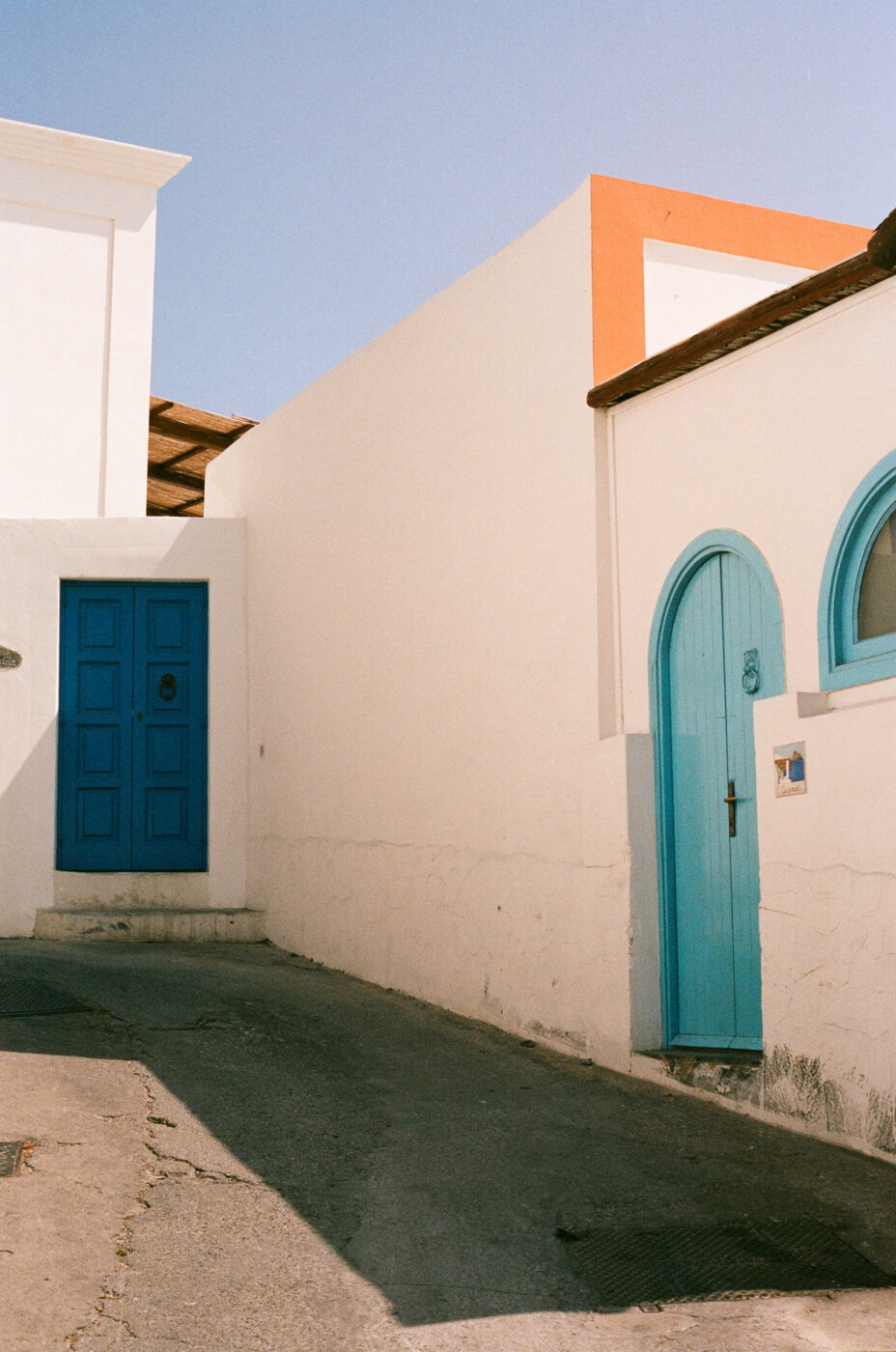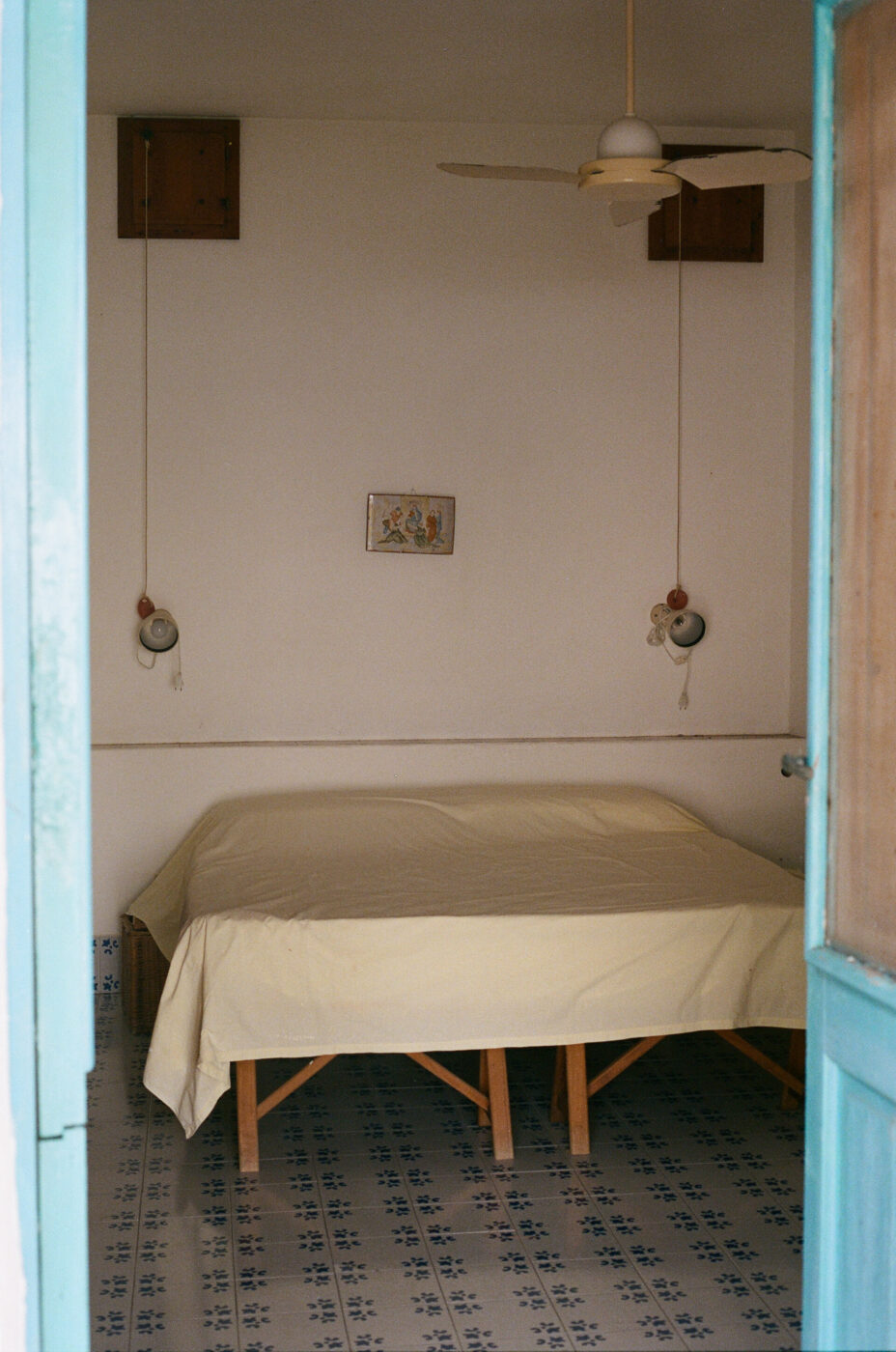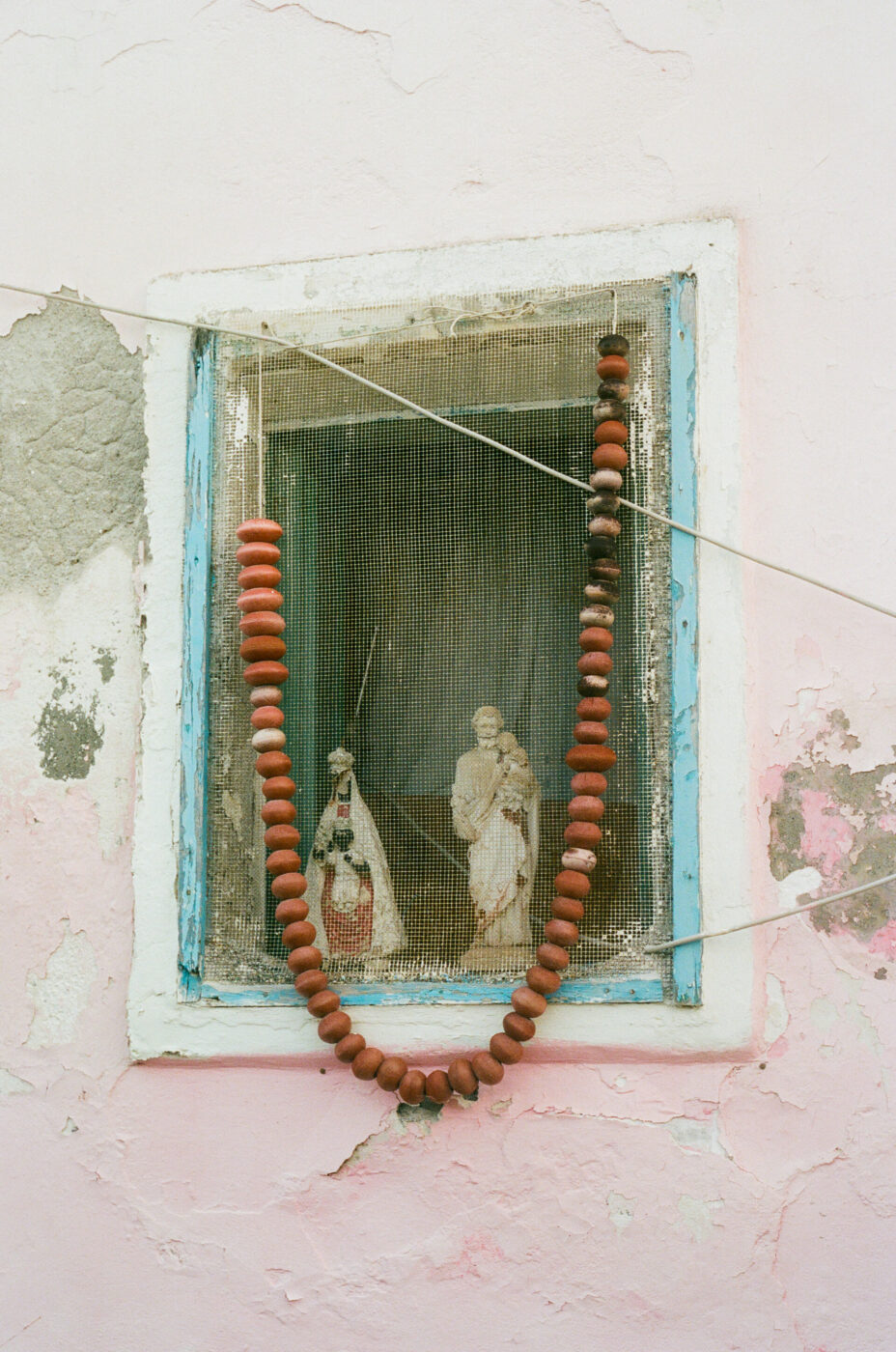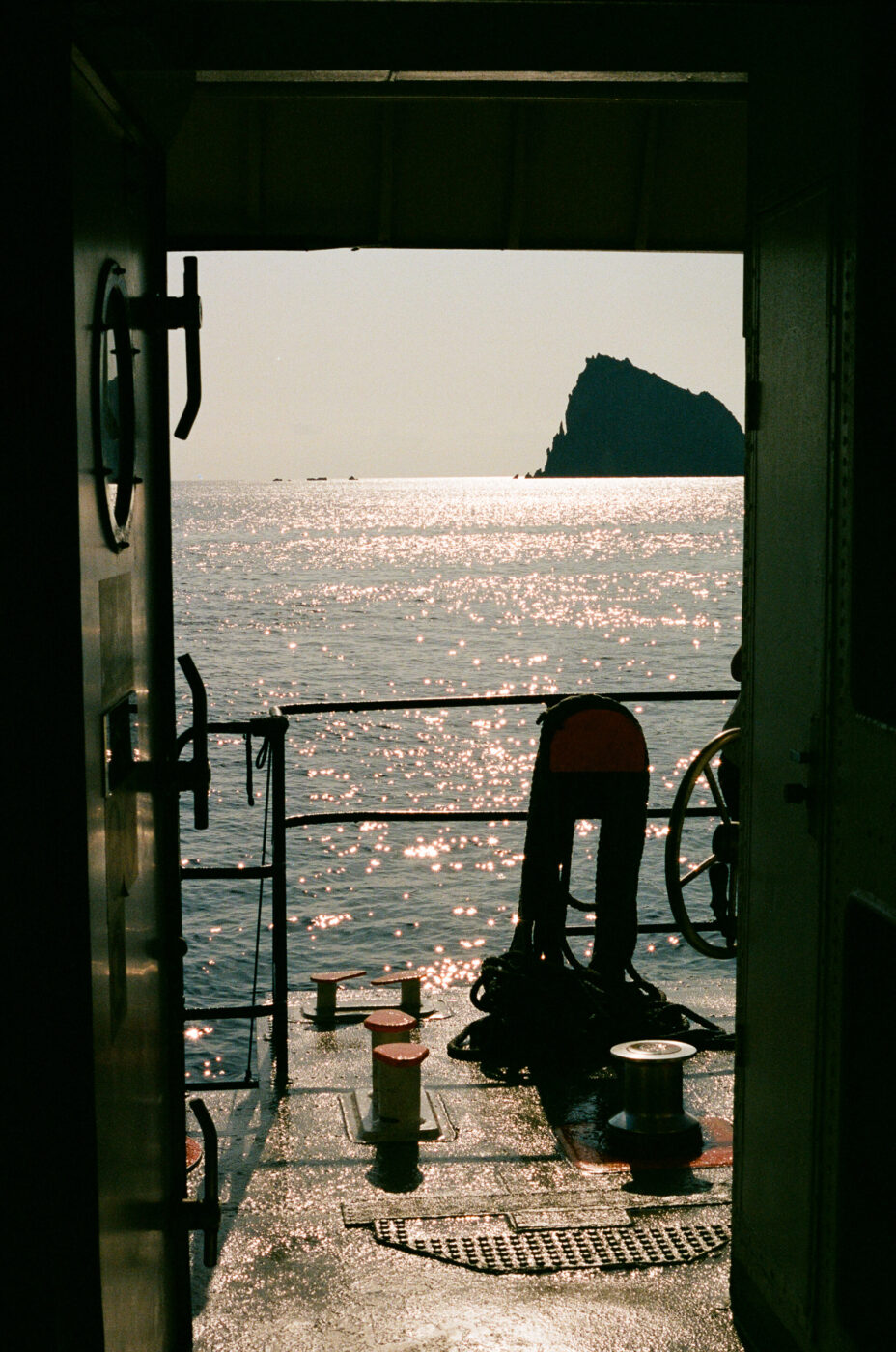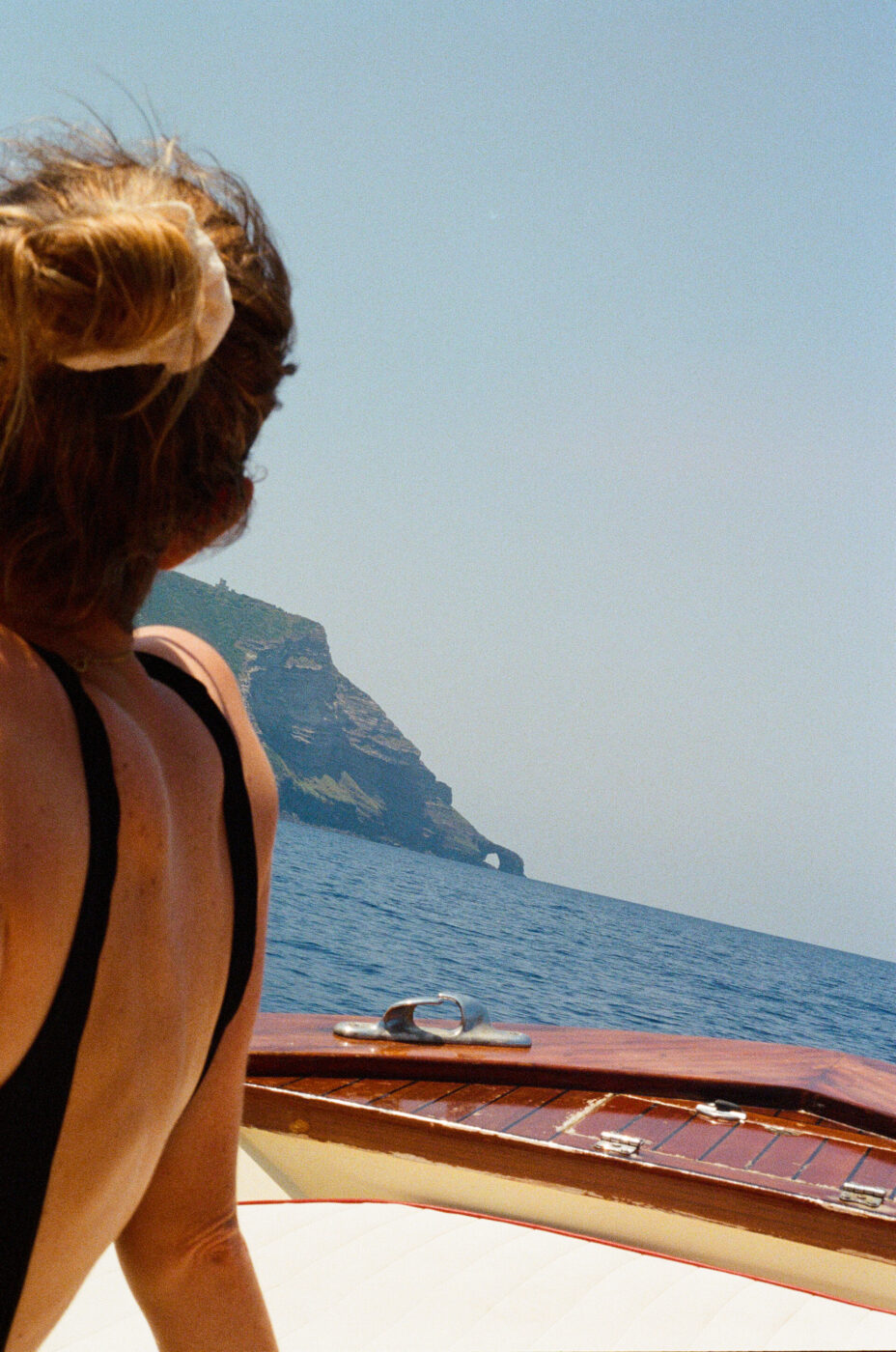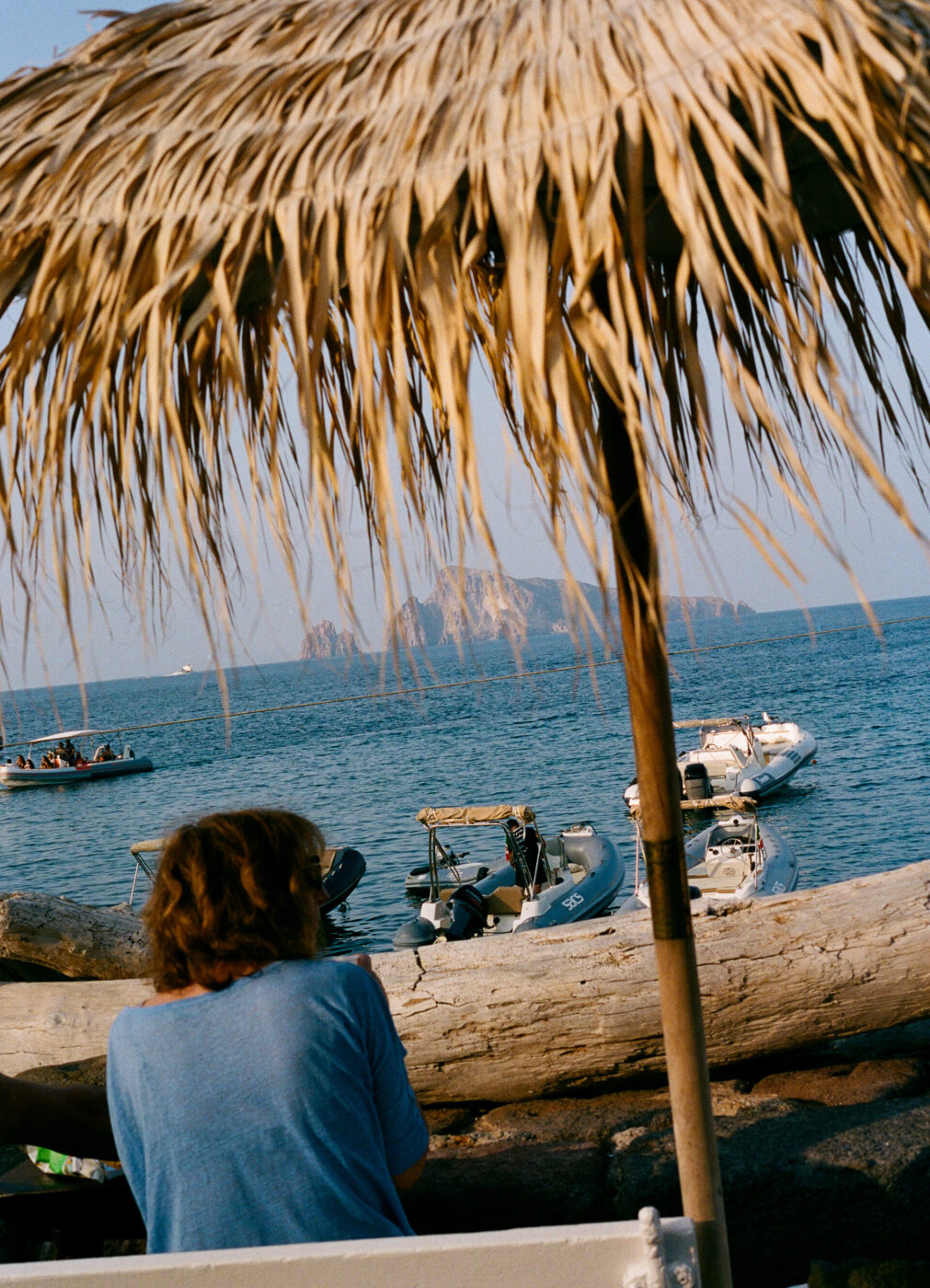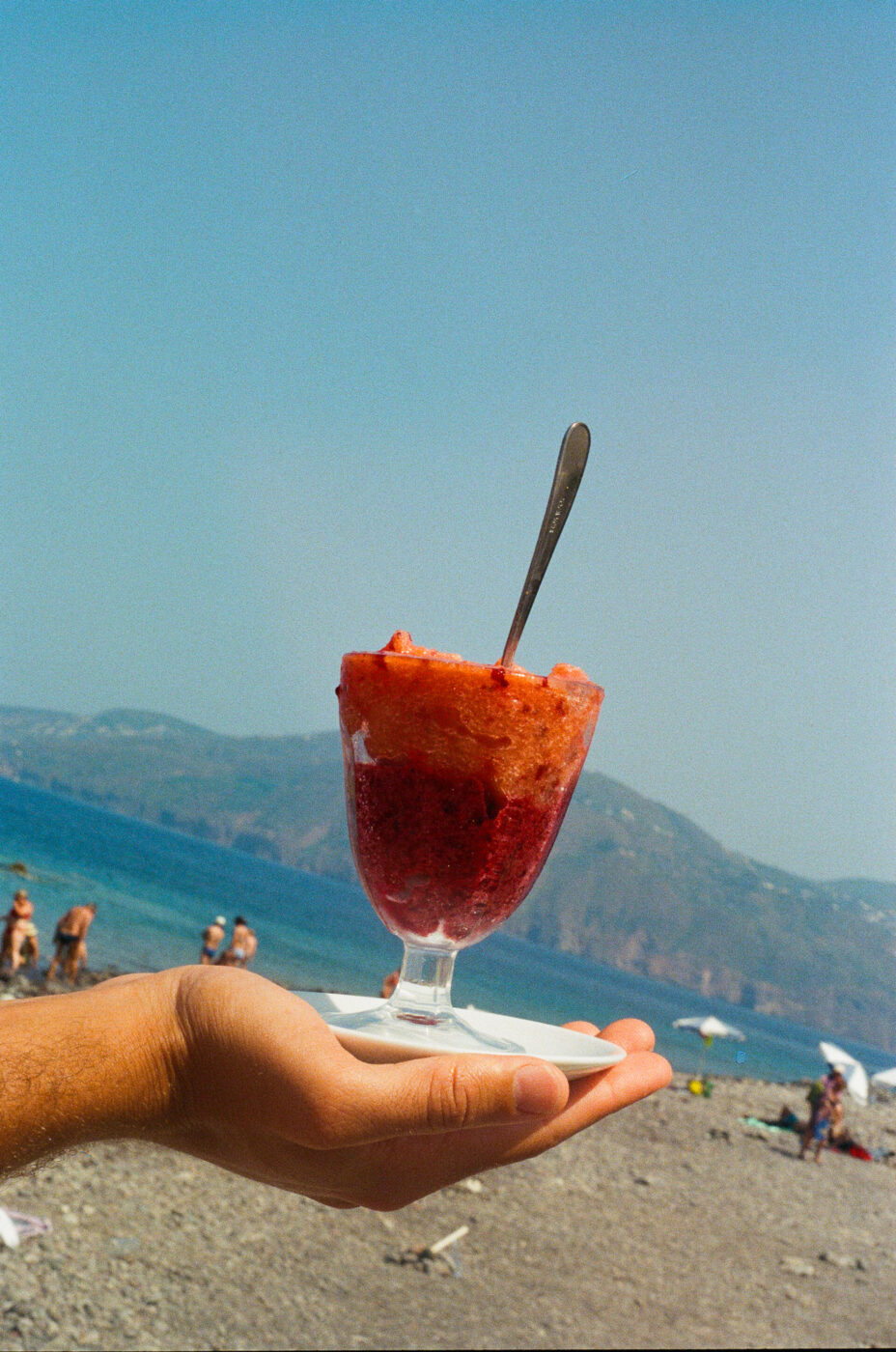Cesare Falletti di Villafalletto is a Roman entrepreneur who probably missed his true calling as a sailor. He’s been coming to Panarea every summer of his life—and the second he steps off the boat, his shoes come off too (and often his shirt). A little Peter Pan, a little Poseidon, he spends the entire season on the island, working remotely and living mostly at sea. “What ties me to Panarea,” he says, “is that for me it is a bit like Neverland.”
“Neverland” is the smallest, most glamorous, and oldest geologically of the Aeolian Islands, a volcanic archipelago off the northeastern coast of Sicily. Just a speck in the Tyrrhenian Sea, Panarea spans barely 3 square kilometers—an outpost of just 280 residents, though that number swells in summer with returning families, loyal visitors, and the odd celebrity docking offshore. There are absolutely no cars, save for the golf cart “taxis”.
Many of its residents historically relied on fishing and caper cultivation, living in relative isolation, without electricity, well into the 20th century. Which means its natural beauty has been gloriously preserved, and the air smells like mirto (myrtle), salt, and wild capers. Though, “when the figs ripen, the air changes,” Cesare says. “It’s like sugar melting on a hot wall.”
Cesare is obsessed with boats—in the charming, talk-your-ear-off way—and convinced that the only real way to live the island is by sea. Panarea is perfectly placed for long, looping day trips to nearby coves and satellite islands, all of them still remarkably under the radar.
That’s partly because getting here takes effort. You can catch the nave di notte—an overnight ferry that leaves Naples at 8:30 PM and arrives around 7 AM—or take the (in theory) five-hour aliscafo (hydrofoil) from the same port. From the mainland, it’s a flight to Catania or Palermo, then a drive to Milazzo, followed by a 1.5 to 2-hour crossing. That slowness is the Aeolian filter—and what has kept Panarea and its sisters safe from the worst of mass tourism.
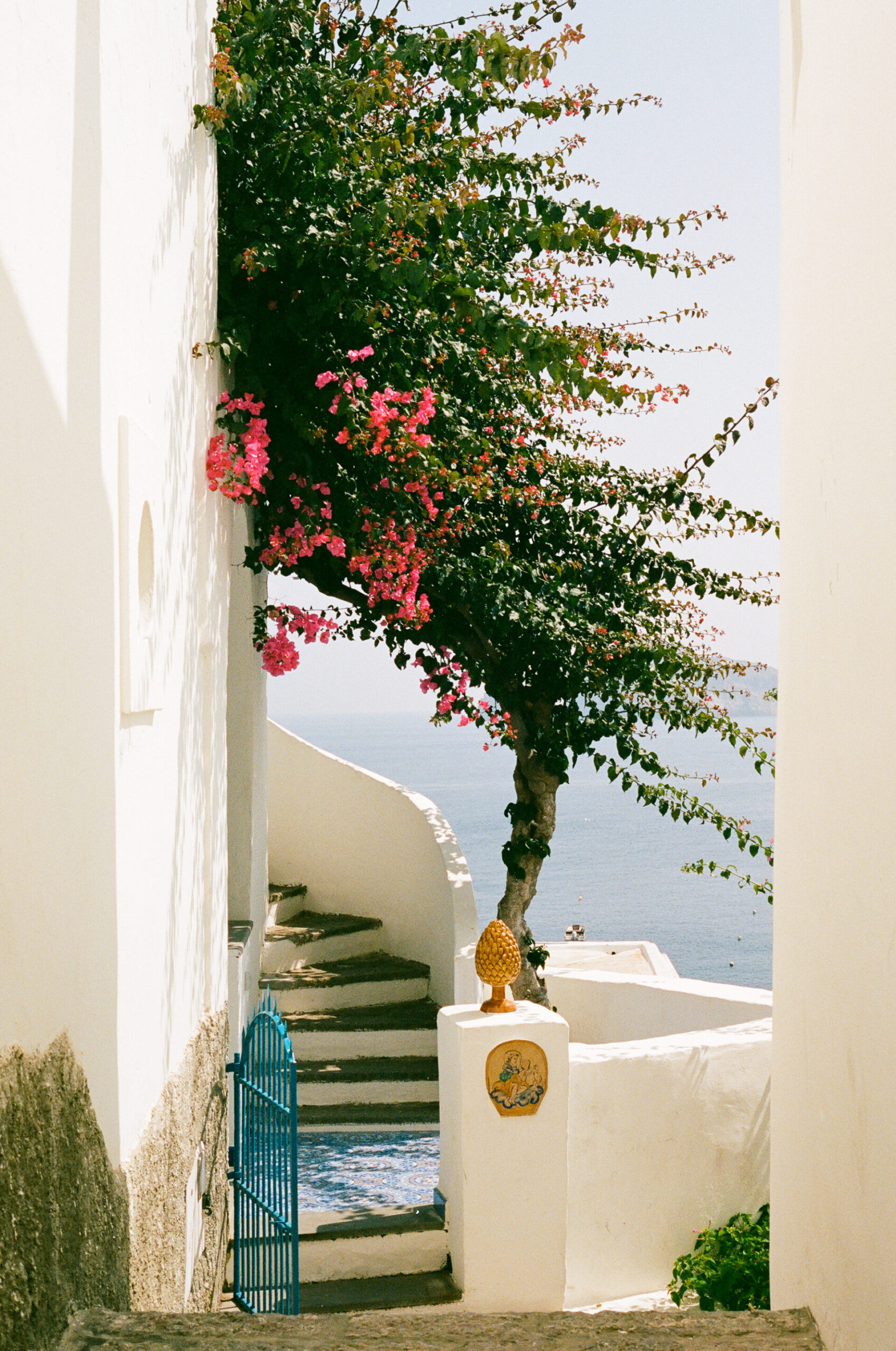
Italy Segreta: What does a typical day on Panarea look like?
Cesare Falletti di Villafalletto: You wake up, have a breakfast of granita al pistacchio e gelso at Bar del Porto, and go to the sea right after. I stay on my boat Master all day. I find a quiet bay—Basiluzzo and Dattilo, two rocky islets off the coast of Panarea, are perfect when you don’t want to go too far. Take a dip, then have a simple lunch made of couscous, caponata, or other local goodies picked up from the rosticceria at the port. Followed by a nap, a few rounds of cards or backgammon, and an aperitivo while sailing back at sunset. Then dinner—either out or at a friend’s place. After all, we all know each other on the island; we’ve grown up together, summer after summer.
Then repeat and repeat. It’s really the dolce far niente.
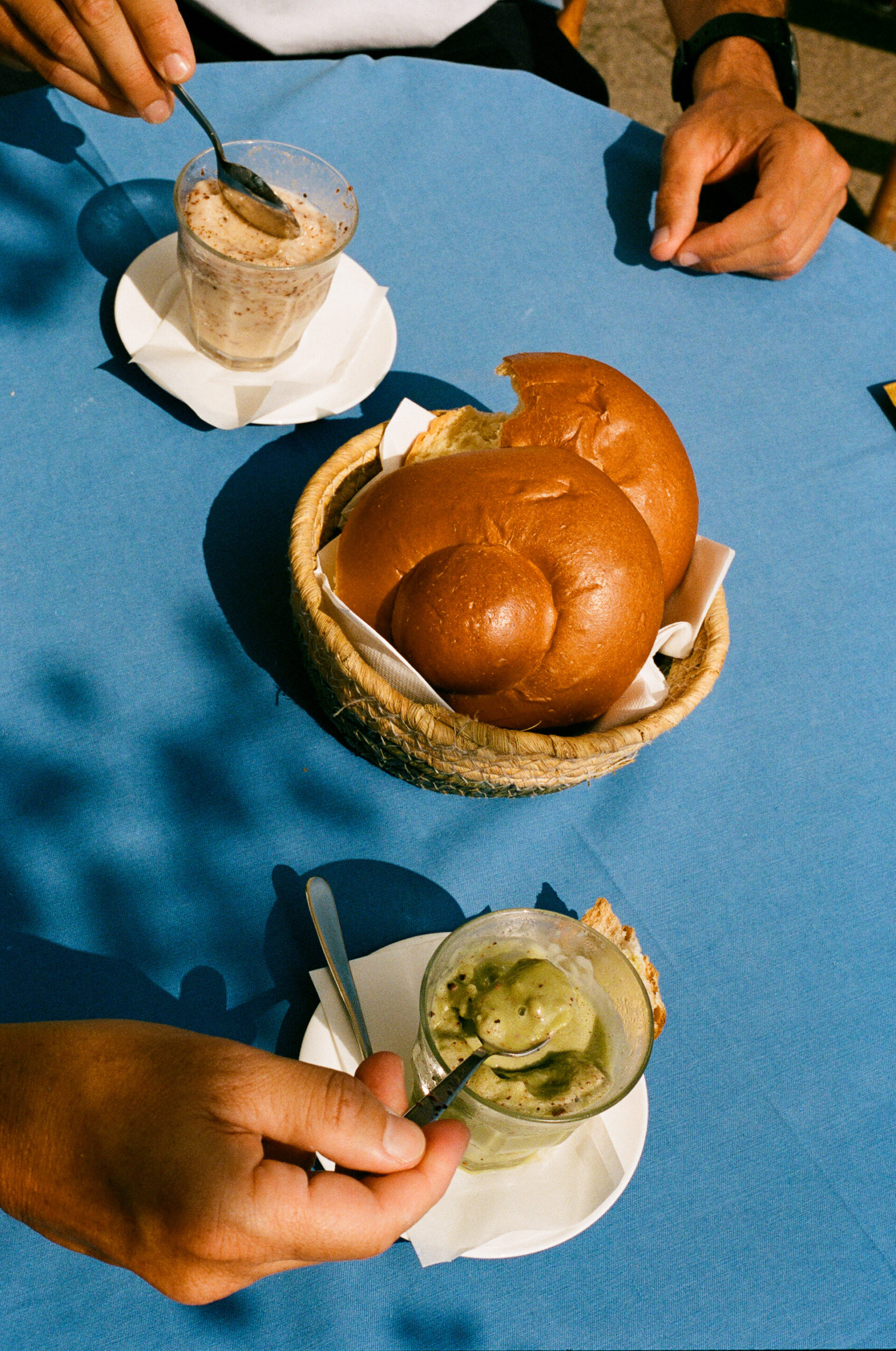
Il Bar Del Porto
IS: When did your family start coming to Panarea?
CFV: My maternal grandfather is Roman. He adored fishing—though he ironically didn’t eat fish (he’d trade it for meat at the macellaio)—so he checked out all the various Italian islands. He wanted to buy a house on an island. The ones he fell in love with were Ventotene and Panarea, which were two islands where there was practically nothing. Luckily, the choice fell towards Panarea, because for me there’s no comparison—look what you have in front of you. It’s a spectacle.
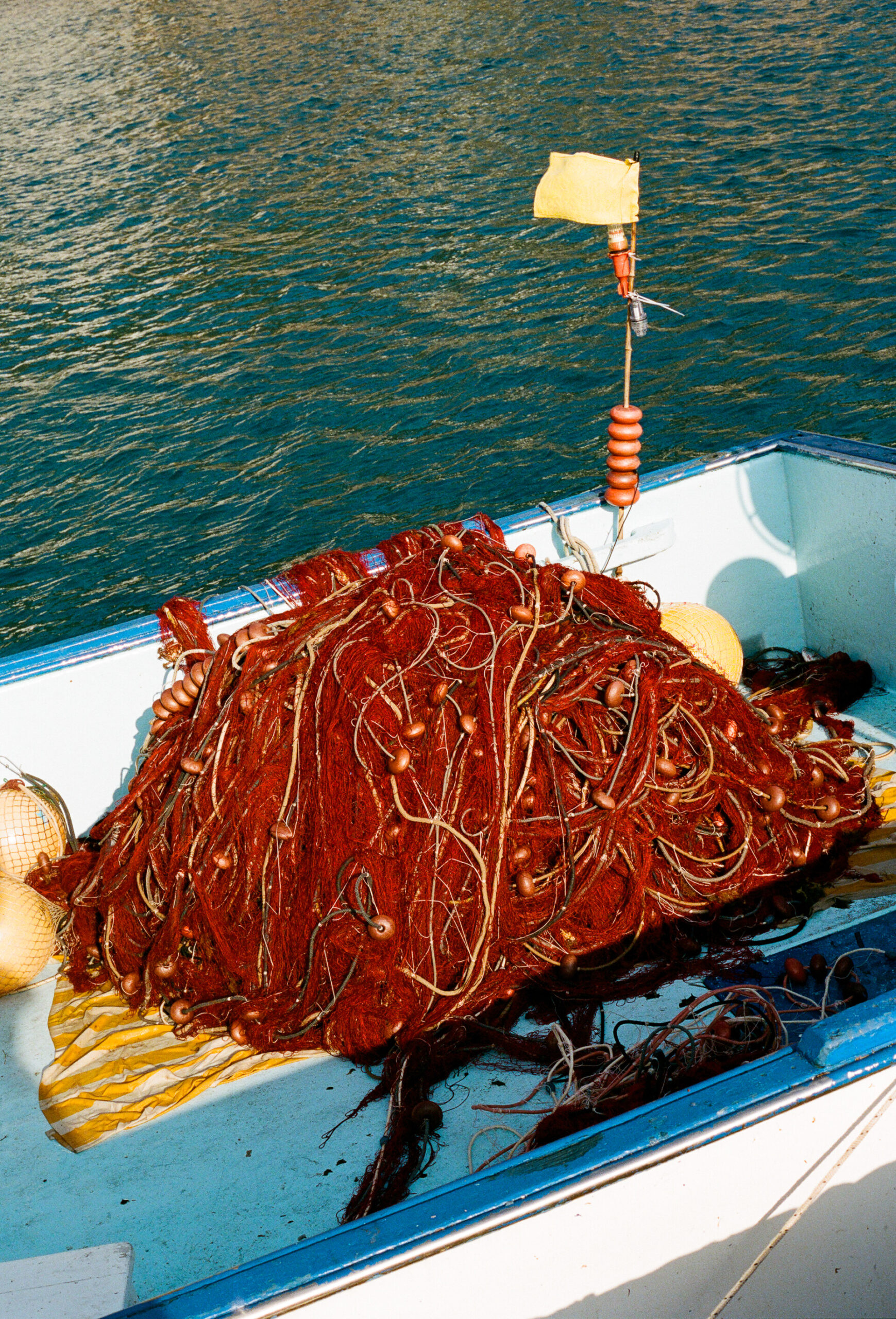
IS: What was the island like back then?
CFV: In the 1960s there was my grandfather and his neighbor Serpone… There were very few houses on this part of the island, which was where the locals lived, and there was no electricity. You lived by the natural rhythm of light. But at night, the stars were so bright that you could see your own shadow.
There was also this Milanese architect, Paolo Tilche, who opened [the hotel] Raya. He’d traveled the world and had all these international friends—so people started coming by word of mouth, stopping on their boat trips. There were only four rooms back then. It was a fun place to eat, dance.
IS: You’re also barefoot.
CFV: It takes a while for your feet to get used to the heat—the dark, volcanic terrain gets really hot. But after a few weeks, your feet toughen up like shoes, and it regenerates you, especially if you do it for a good amount of time—two weeks, a month.
IS: So you know the sea well by now?
CFV: All the rocks have a name. The one right in front of the house is called Lady Diana because apparently Lady D would dive in from there one summer. Then there’s the Whale, the Finger, the Mushroom, the Locomotive… And each one tells you something about the state of the sea. If from here you see the Whale, it means it’s calm. If you see the Locomotive, it means it’s rough.
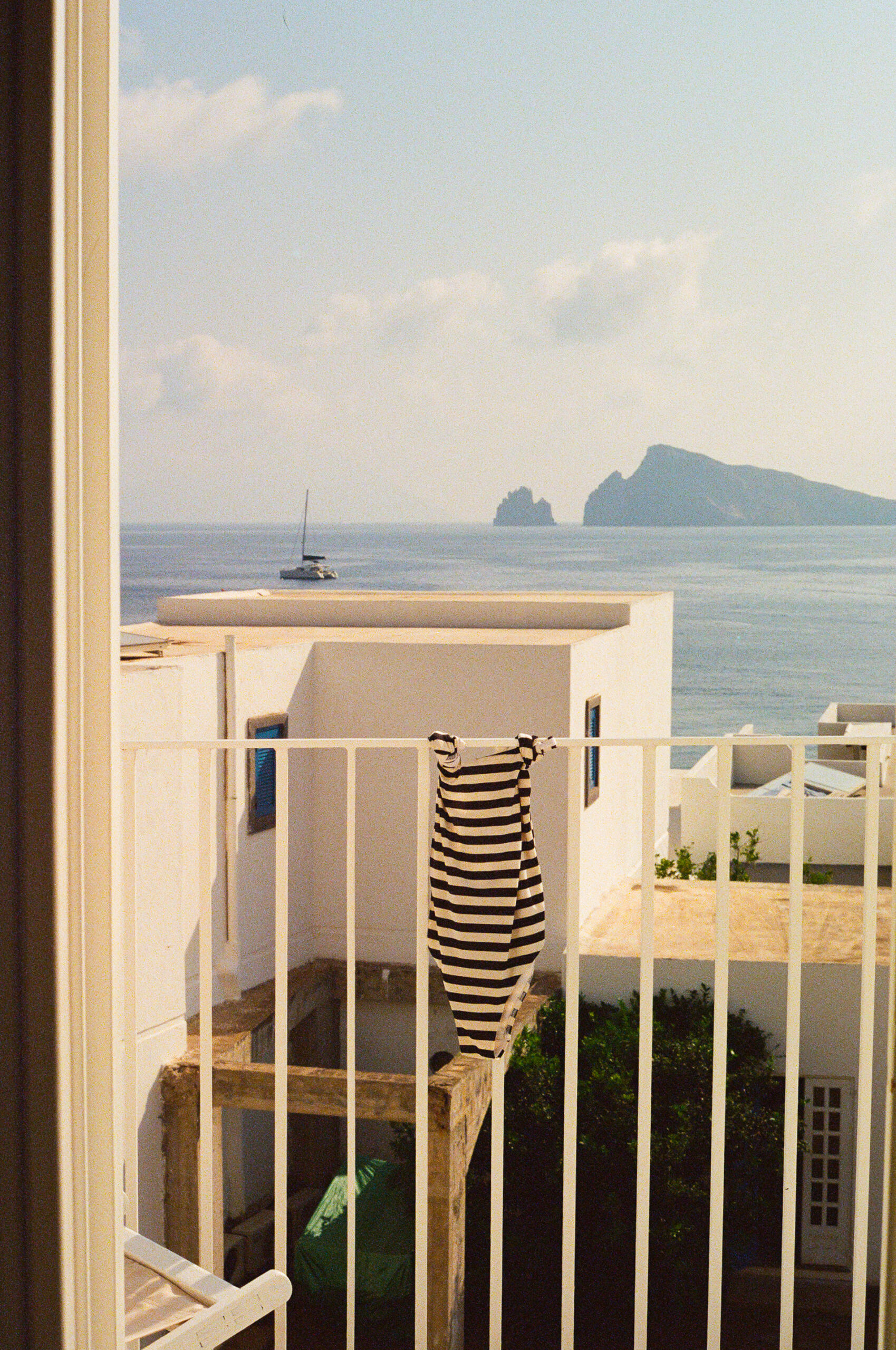
IS: What’s your strongest memory of this place?
CFV: The view. I don’t know what to tell you—the view. You sit here to eat [we’re standing on the terrace of his house], and you see the volcano erupting every five minutes. My uncle Mario would host dinners here too. He was famous for his wild gatherings. Islanders and visitors alike would come together to eat: from aristocratic families to local fishmongers, all sharing the same table and a good time.
Another fantastic memory: after our parents had gone to sleep, we’d sneak off, steal the boats, and play guardia e ladri (cops and robbers) under the stars. But more than anything, that incredible feeling of freedom. There was always someone keeping an eye on you—an islander, a friend’s parent. It was safe and made us feel completely free.
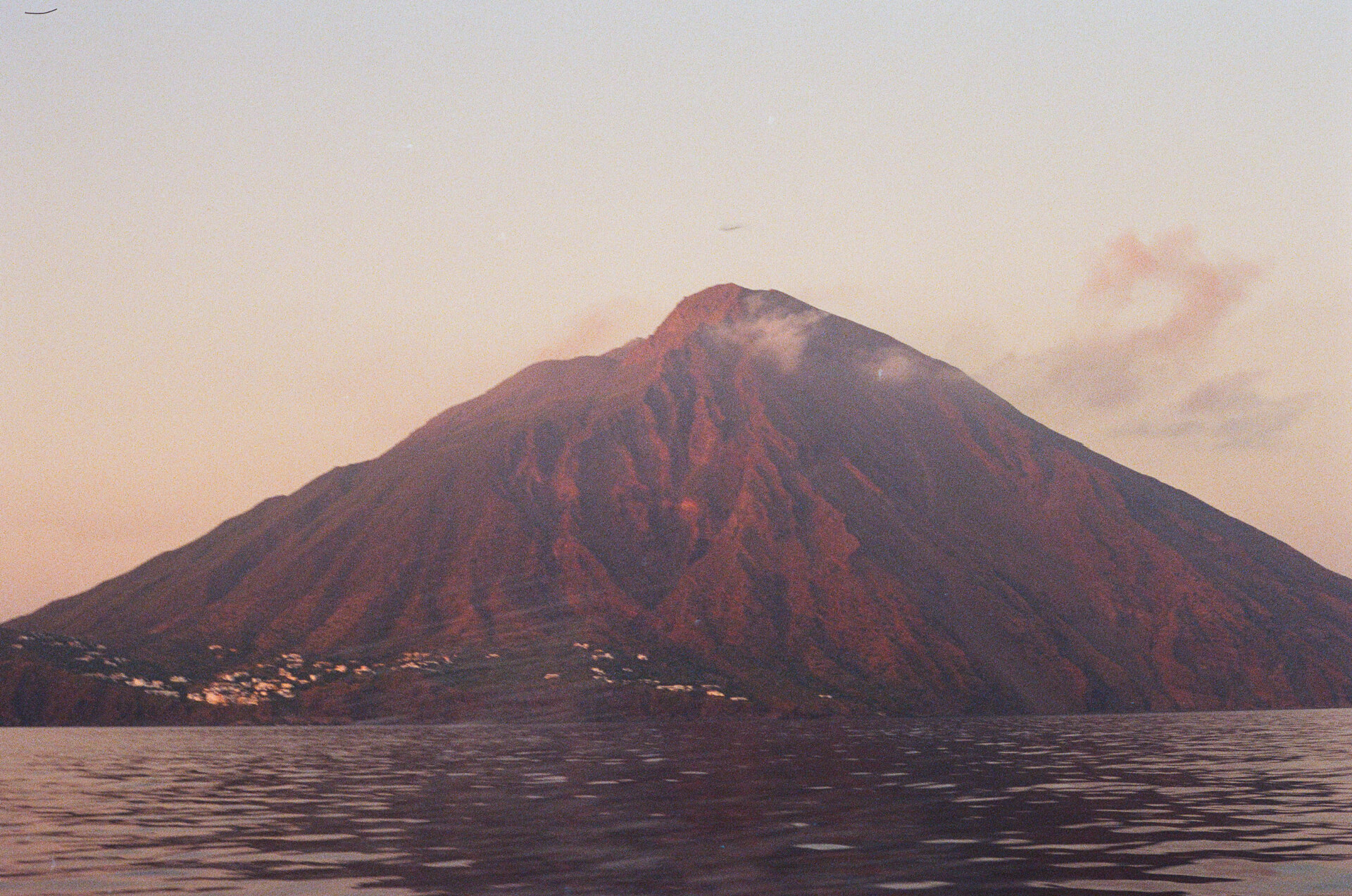
Stromboli
IS: Tell us more about your childhood summers.
CFV: All the kids went fishing. You’d sleep five hours a night. You played, you messed around, you stayed in the water for hours. You came home with fingers like raisins. In the evenings, we always ended up at someone’s house. You cooked the fish you’d caught. Even if you were little, you felt grown-up.
IS: And when you reached your teenage years?
CFV: Le feste in barca. All the boats would tie themselves next to one another at Lisca Bianca, and it would turn into this big at-sea party. And we’d go dancing at Raya every night.
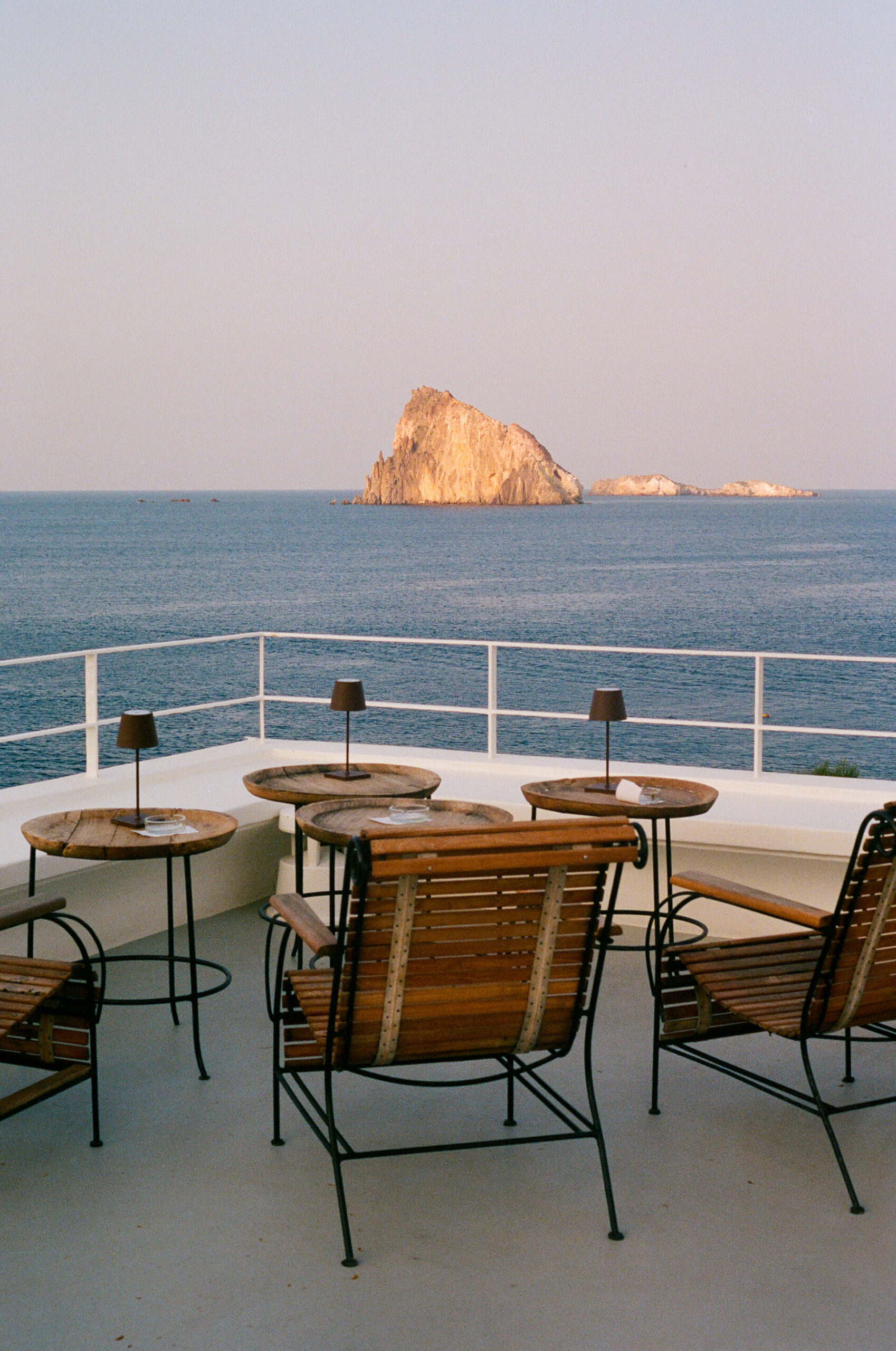
Raya
IS: What about your kids today?
CFV: Since there are no cars, I let them be free and do what they want. They love it as much as I did. They have their cousins and friends “del mare”. At the end of every summer, they cry desperately just like I did. They don’t want to leave, and how could I blame them?
IS: What’s it like at night?
CFV: When you sleep here, it feels like being on a boat. You just hear the sea going squash squash squash.
IS: How do you actually get to your boat?
CFV: It’s a hundred meters down to the sea. There’s the moletto, they pick you up and take you to your boat. Even at night—if you want to come back at three [in the morning], they will come get you.
IS: If you don’t have a boat, where can you swim on the island?
CFV: There’s one beach, Cala Zimmari, on the other side of the island. You can walk, it’s about 30 minutes, or take a taxi, which is a golf cart here. They used to be little apette (three-wheeled mini-trucks) with seats bolted on. As kids, we’d grab onto the back for a free ride. The drivers would yell at us: “Get off!”
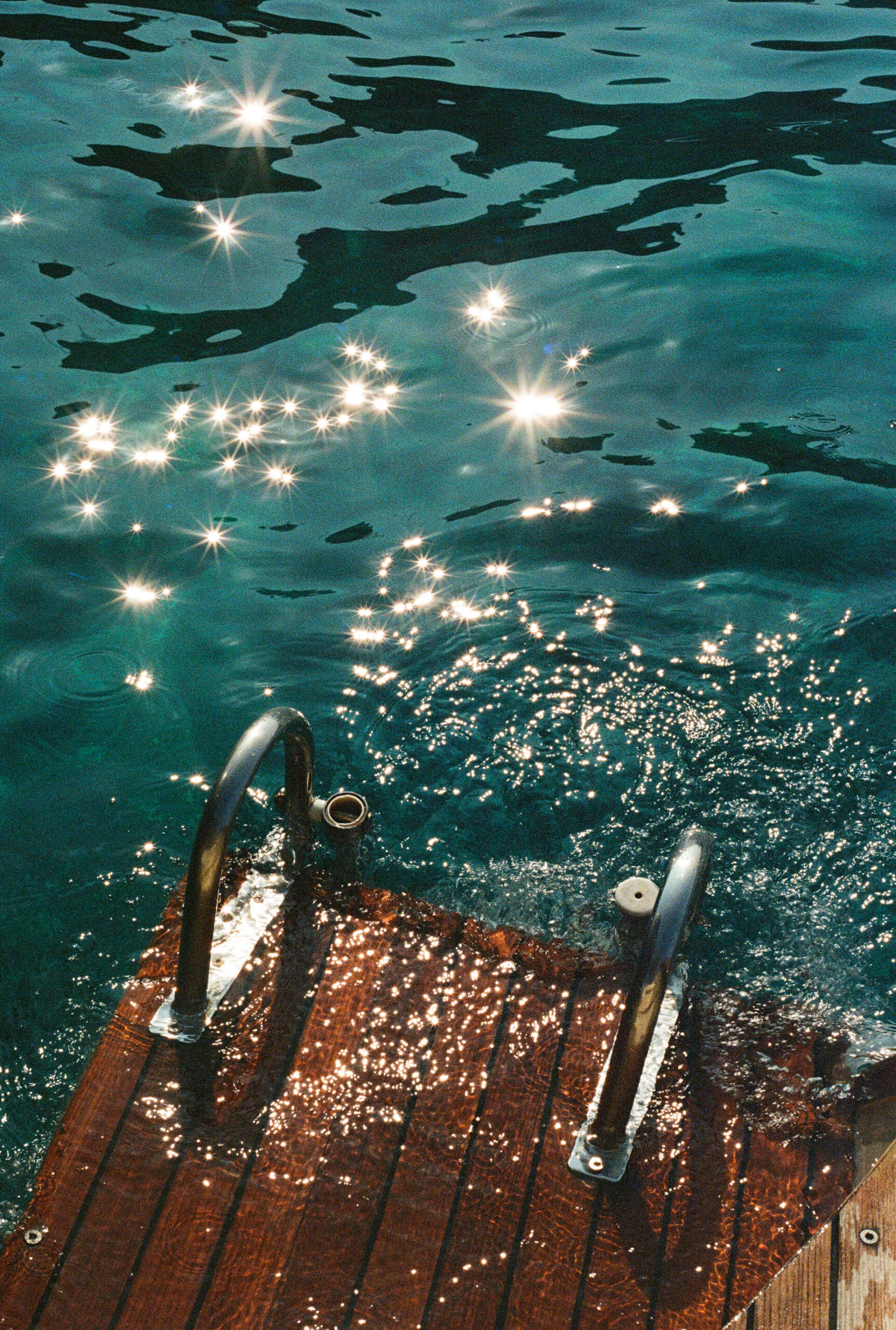
IS: Do you invite many guests to stay with you here?
CFV: The house… it’s like a port. More than guests, it’s visitors who pass through the Aeolian Islands and stop by the house for a few days.
IS: Is there a traditional dish from here you recommend?
CFV: Pasta con le sarde, caponata, and obviously granita. There’s also one called melanzane al cioccolato (chocolate eggplant)—you can try it at Paolino. It’s typical from the Amalfi coast, but we make it here too. It’s eggplant peeled, boiled, then layered with chocolate and nuts.
IS: Like eggplant parmigiana, but dessert?
CFV: Exactly. You slice it, and it looks like a cake. You give those not in-the-know a bite and they say, “Wow, what is this?” You tell them: “Eggplant.” And they freak out.
IS: What’s something you wish people understood about Panarea?
CFV: That it’s fragile. Panarea isn’t an image. It’s real. And if you treat it like a postcard, it’ll break. You have to love it with your feet in the dirt. Not just your eyes on the view.
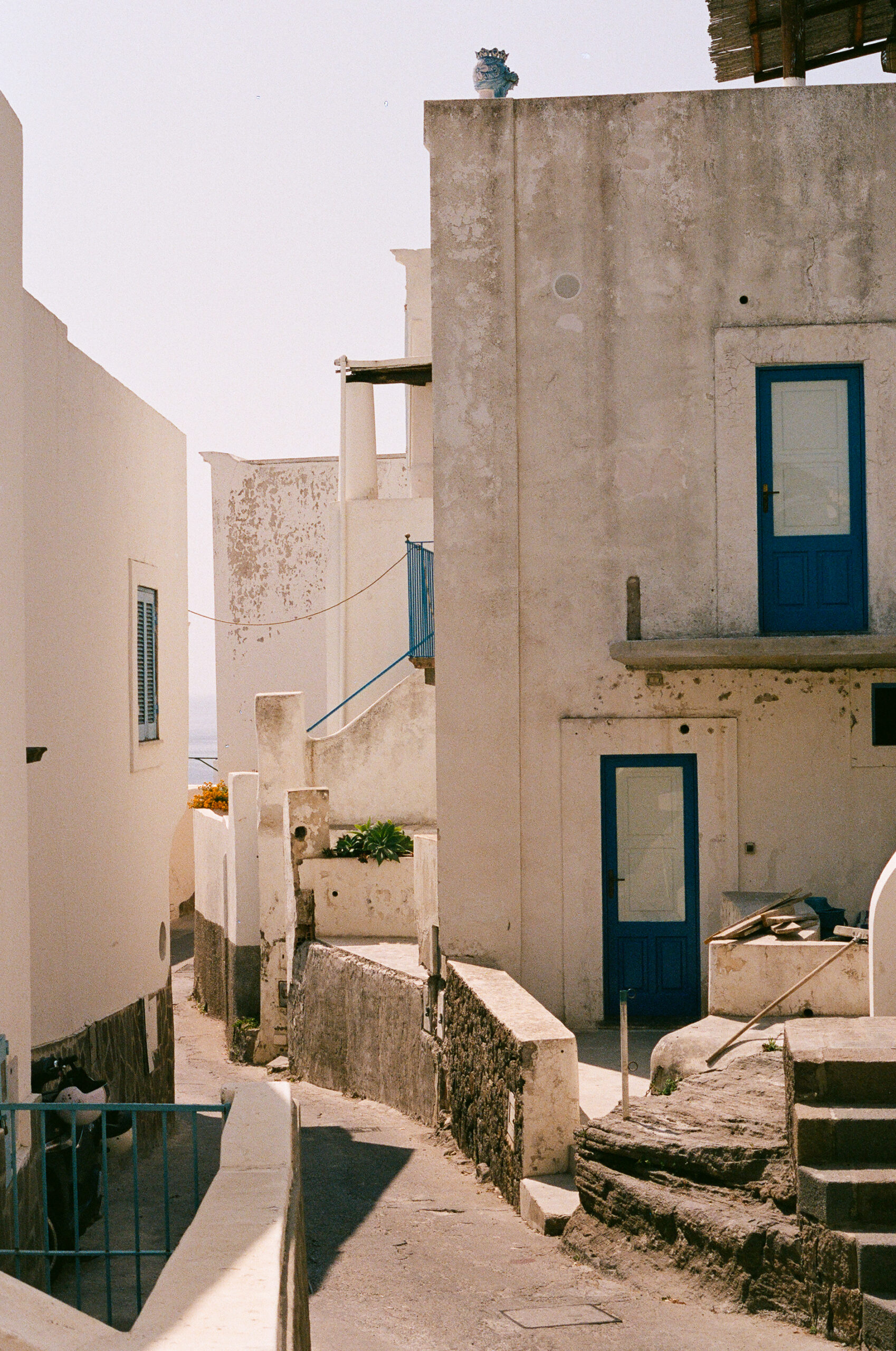
CESARE’S GUIDE TO PANAREA
WHAT TO DO
Go barefoot — “There are still a few nostalgics who like walking the streets barefoot… I’m one of them. It might sound strange, but I find it therapeutic,” says Cesare. Whether you decide to follow his lead or not, you should certainly leave your heels at home.
Explore by boat — Cesare affirms that the best way to live the island (and its neighbors) is by boat. Rent one from Andrea Tesoriero, a self-taught maestro d’ascia who builds just one custom wooden boat a year. If you’re lucky, you’ll get to meet him and see his shipyard—there’s nothing like it. When you don’t want to go far, Basiluzzo and Dattilo, two rocky islets off the coast of Panarea, are great for taking a dip. If you’re up for more of an adventure, Stromboli, Salina, and Lipari are all about an hour away.
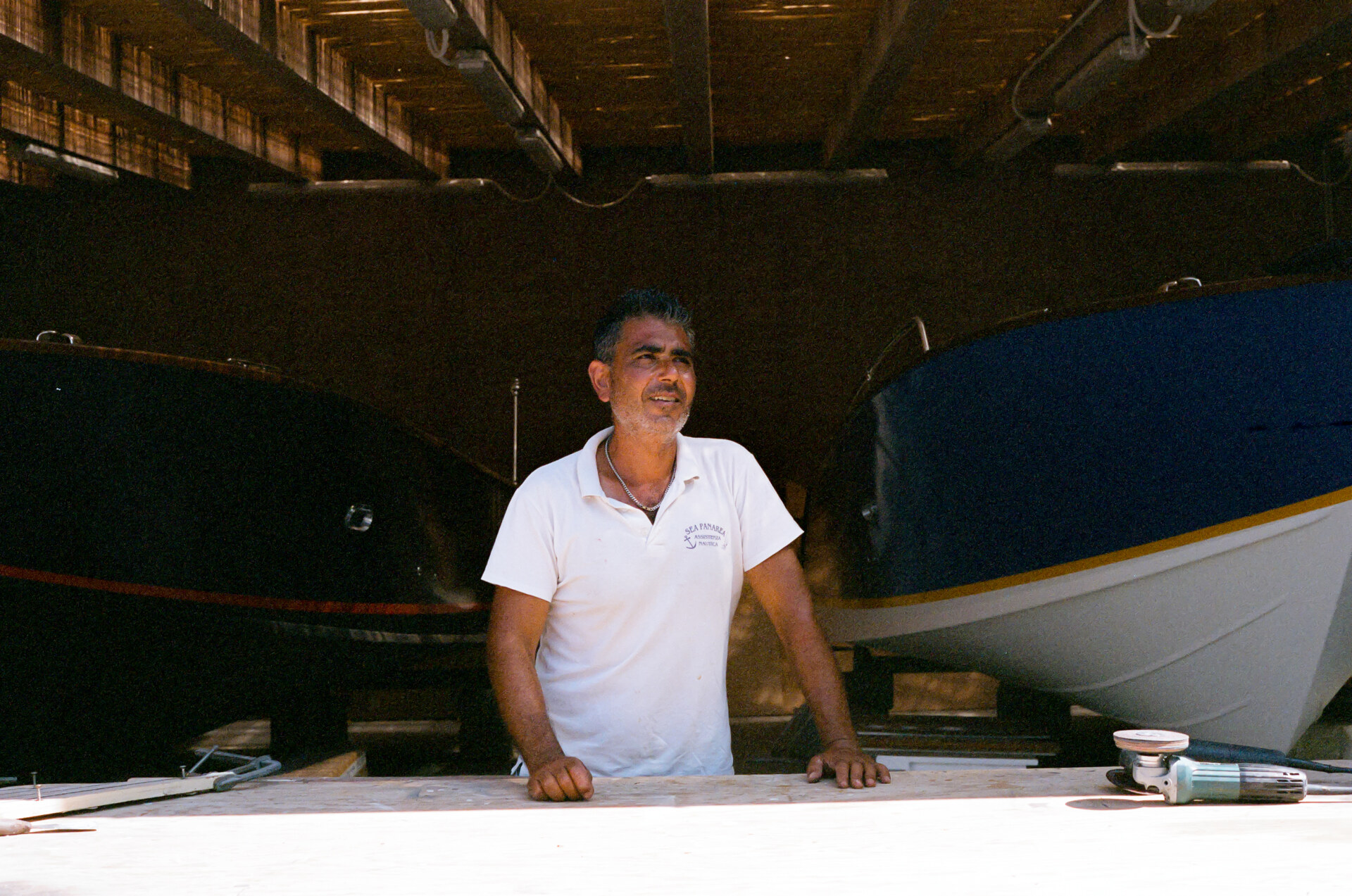
Andrea Tesoriero
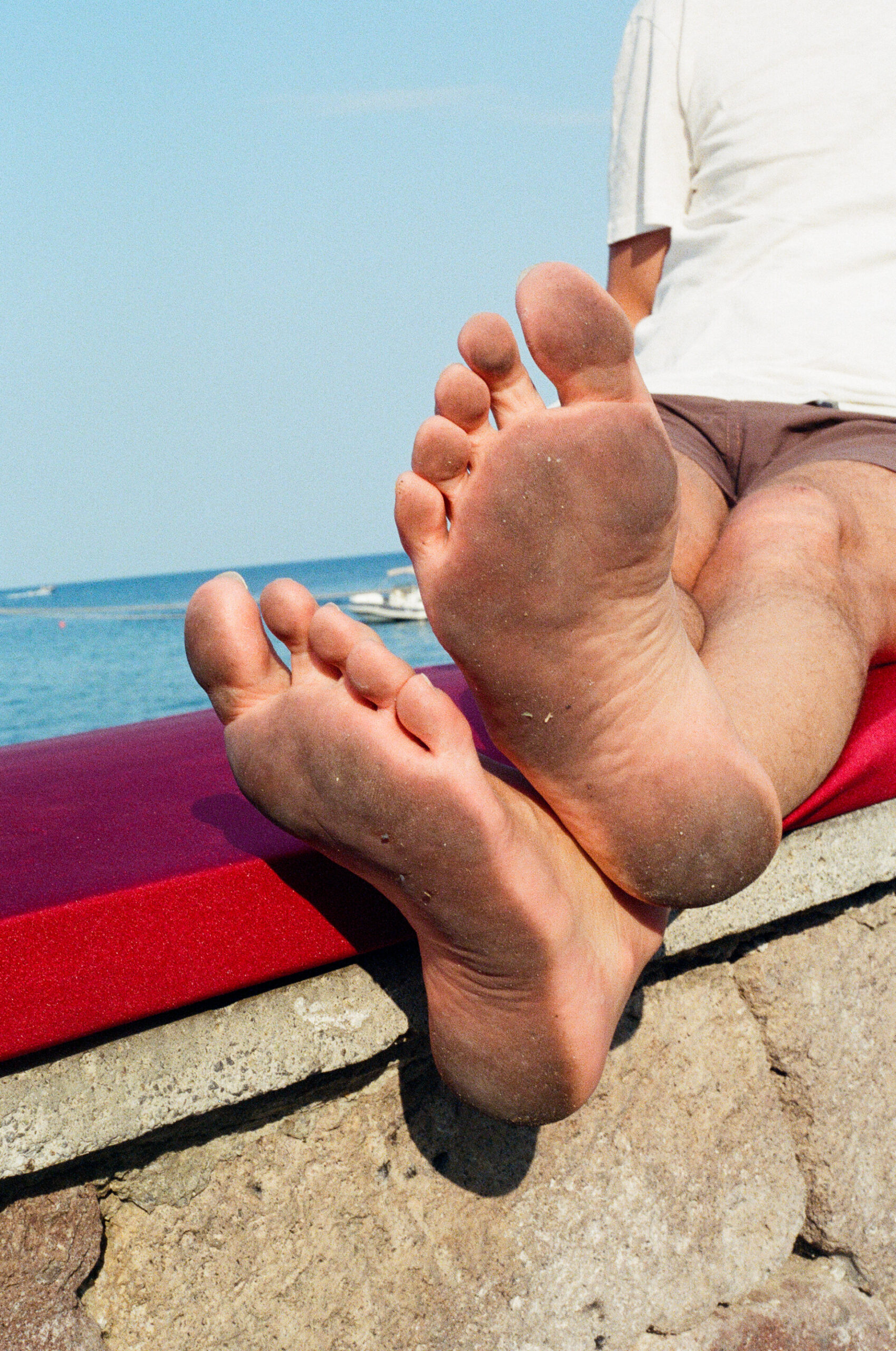
Swim in Pollara Bay (Salina) — Pollara is what’s left of a collapsed volcanic crater—the western half sank into the sea, leaving behind a steep cliff and a wide, shallow bay. The water is deep blue, and, in contrast with the black of the rocks and the green of the shore, it feels like Jurassic Park. In summer, the sun sets directly into the sea—which made it perfect as a filming location for Il Postino. After, head to Alfredo for lunch.
Watch Stromboli erupt — Take a boat to the north side of Stromboli, just in front of the Sciara del Fuoco—a steep ravine that runs from the summit of the volcano to the sea. This is where lava, ash, and rocks fall during eruptions. Stromboli has been active for over 2,000 years, erupting every 10 to 20 minutes, and at night, you can catch red-hot debris shoot from the crater and roll down into the water. (Pro Tip: Beforehand, have aperitivo at the bay of Ginostra, one of the smallest ports in Europe, and dinner at Ristorante da Zurro.)
Shop at Penelope — At just 19, Barbara Calabresi left Milan to settle in Panarea in search of a quieter rhythm. Today, she runs Penelope, a small textile atelier where she hand-weaves fabrics dyed with flowers, leaves, and botanicals foraged on the island. The result is a collection of gauzy scarves, sarongs, and home linens that are perfect for the summer.
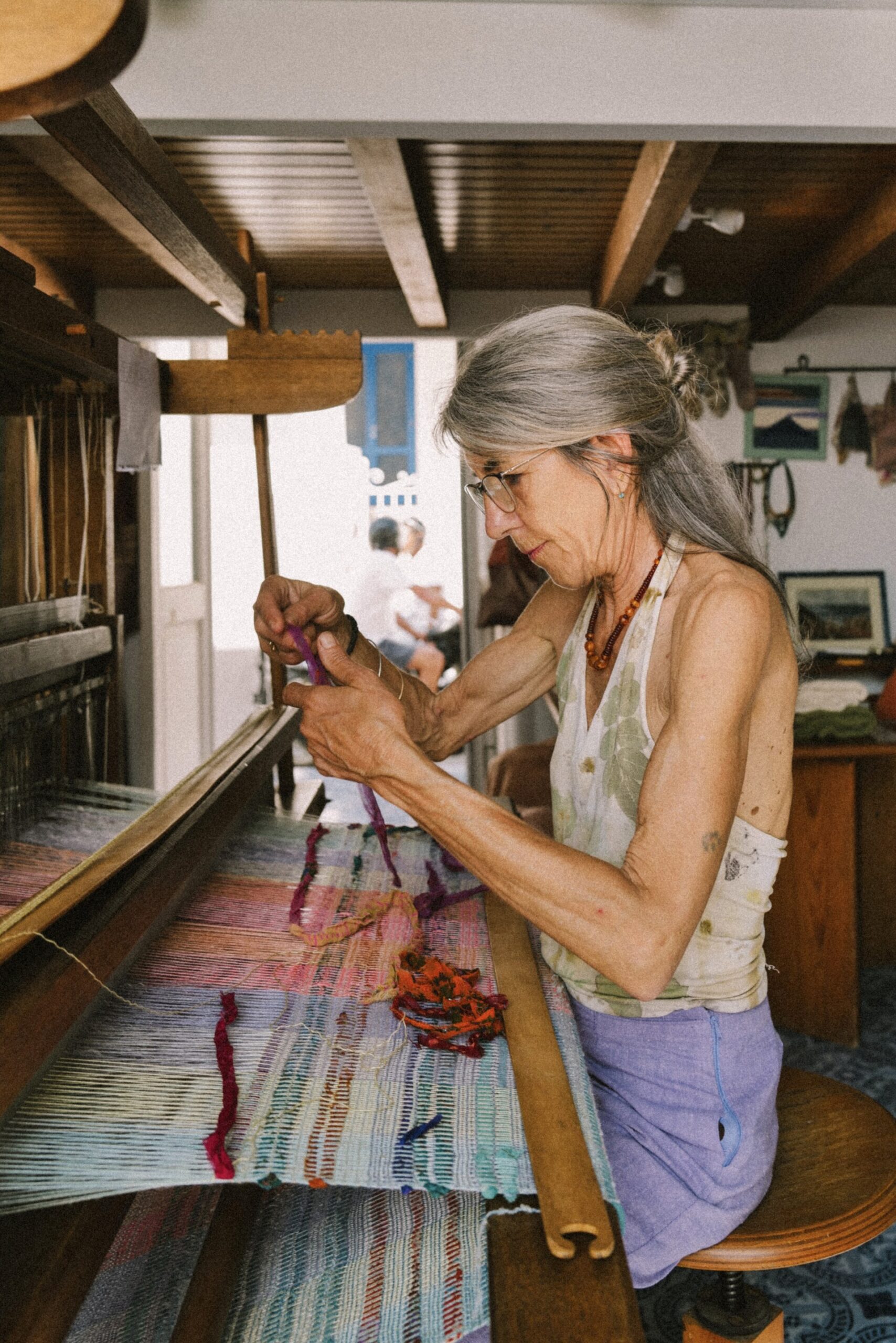
Barbara at work at Penelope
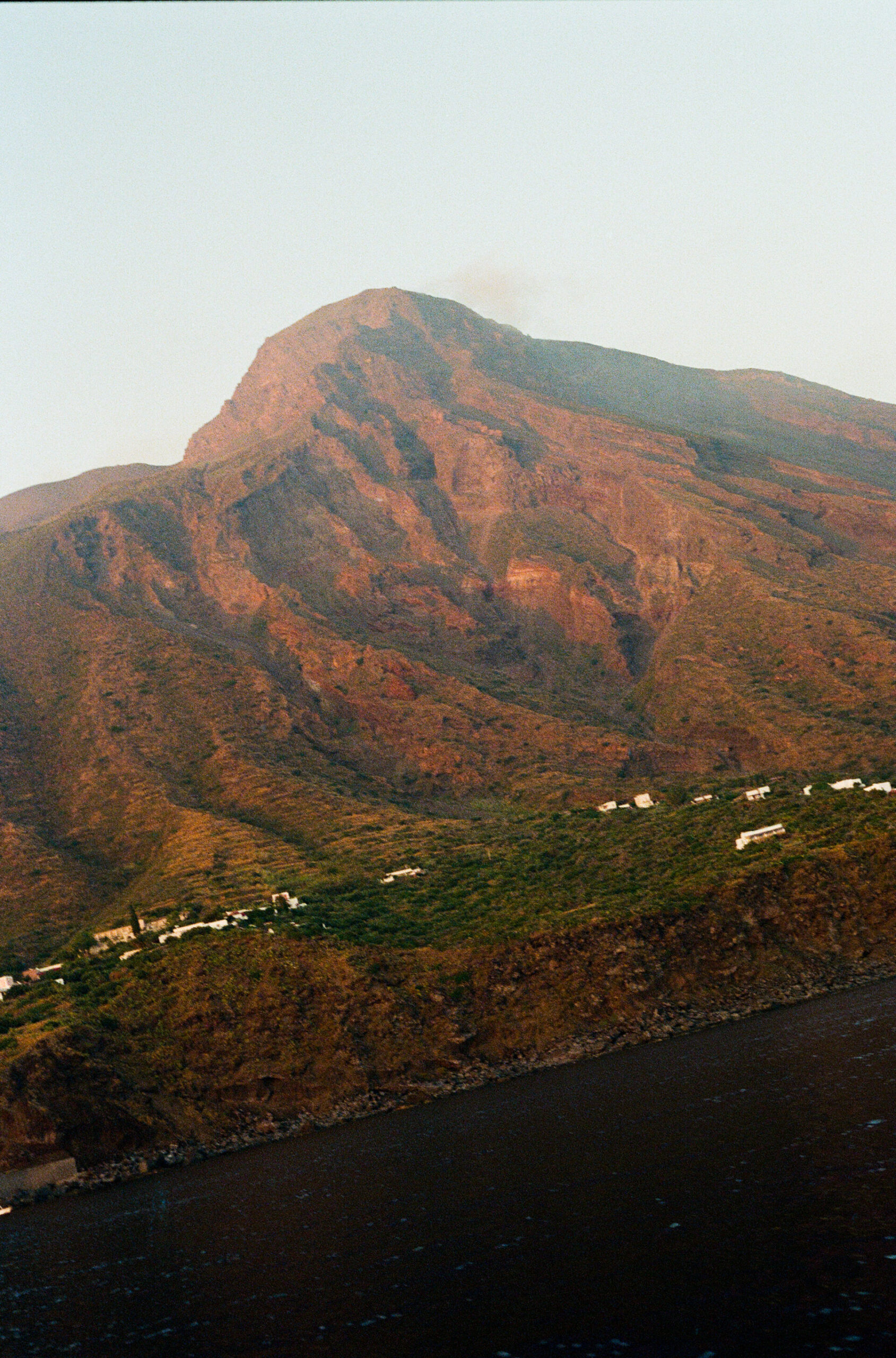
WHERE TO EAT
On Panarea:
Ristorante Da Pina — A Panarea essential since 1968, Da Pina was founded by the formidable Pina Cincotta Mandarano and remains a family affair, now helmed by the next generation, Antonio. Cesare calls it a must, and we agree. Here, you’ll find lava stone tables and a menu that marries creativity with deep respect for island tradition. Don’t miss the gnocchi alle melanzane.
Bridge Sushi Bar — Opened in 1992, Bridge (formerly a bridge club, hence the name) was one of the earliest sushi counters on the islands, serving raw fish with Japanese technique and Sicilian ingredients. “She was the first to do sushi here—back when nobody even knew what sushi was,” says Cesare. Today, it’s a beautiful red-and-white terrace spot filled with bougainvillea, where you can order from a surprisingly expansive menu: sashimi toro, uramaki with gambero rosso, seared tuna in teriyaki, miso soup, gyoza, or tempura-style fritti.
Raya — The oldest and most iconic locale on the island, Raya is Panarea, and Panarea is Raya. Now also a boutique hotel and restaurant, it’s less about the food than the feeling: sunset aperitivos on the legendary terrace, the silhouette of the bay during a soft dusk, and the unforgettable parties. Barefoot freedom coexists with old-school glamor—sealed with the purchase of one of their famously overpriced stingray-logo shirts, a quiet flex for those who know.
Cusiritati — Perched above the harbor in San Pietro, Cusiritati has been capturing the spirit of Panarea since 1970. Run by three generations of Sulfaro women—Amelia, Marilena, Federica, and Sabrina—it’s a matriarchal gem with just 13 tables on an intimate terrace overlooking the sea and the volcanic outline of Stromboli. At lunch, the kitchen leans into tradition with dishes like scorfano alla ghiotta, spaghetti alle vongole, and the catch of the day. Dinner shifts toward experimentation: think amberjack with lemon ice cream, beet risotto with tuna and mint, or seared dentex with roasted escarole and Malvasia-soaked raisins.
Trattoria Da Paolino — The most authentic restaurant on the island, Da Paolino is run by Paolino himself—a larger-than-life local legend known to pull up a chair mid-meal, often with his wife and daughter in tow. The atmosphere is warm, the cooking unfussy and full of heart. Standouts include involtini di spada, caponata, and spaghetti with swordfish, capers, and crushed pistachios—plus the unforgettable torta di melanzane.
Antonio il Macellaio — This steakhouse with its own butchery is known for its rare cuts from around the world—including Kobe and American Angus, Rubia Gallega and Baltic heifer—and a panoramic view to match. Since Antonio’s passing, his wife and son have taken the helm.
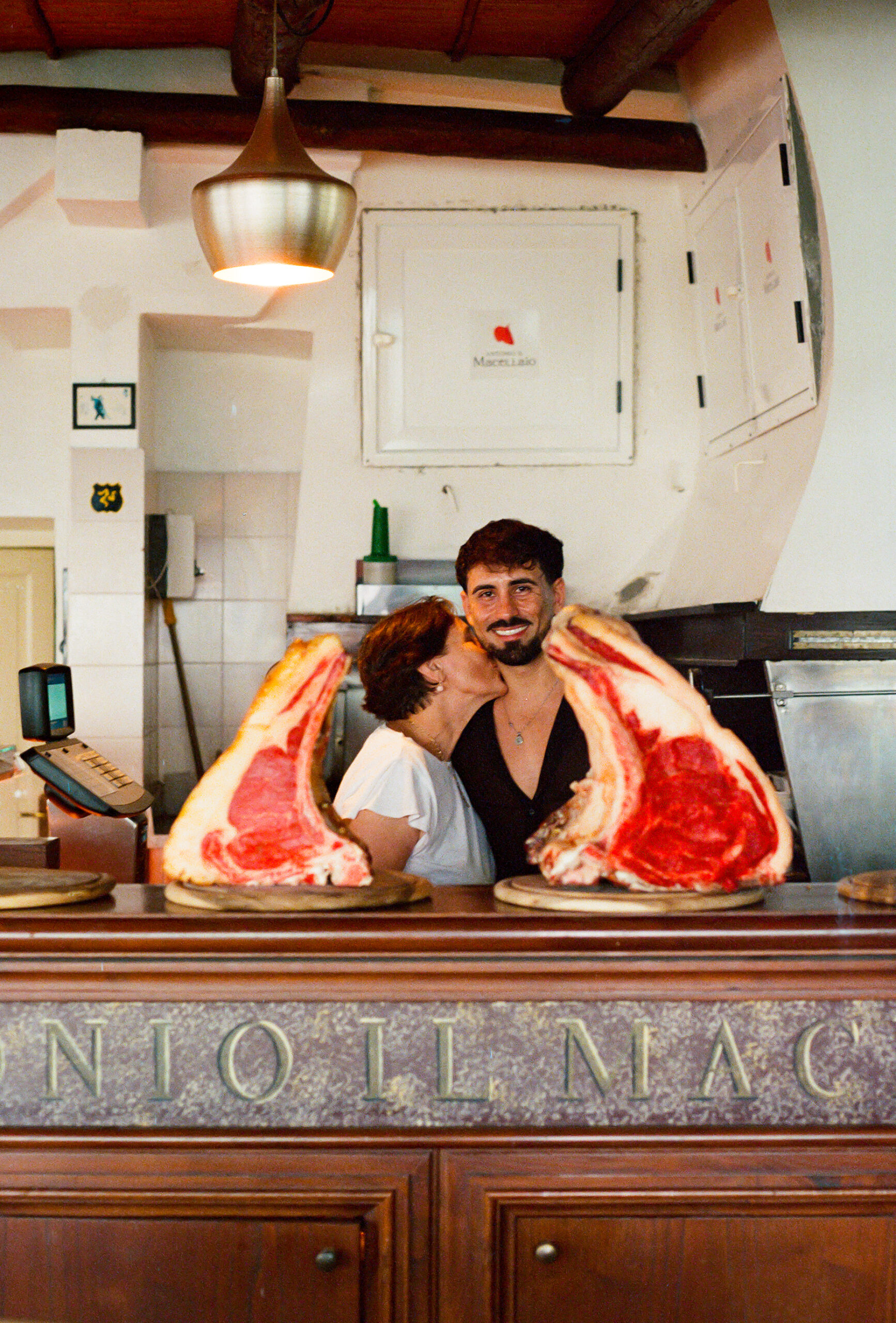
Antonio il Macellaio
On your day trips:
Da Alfredo (Salina) — An institution in Salina, Da Alfredo is famed for its “pane cunzato”—a traditional Sicilian open-faced sandwich topped with ingredients like tomatoes, anchovies, and capers. Be sure to ask for a side of tonno affumicato aromatizzato al finocchietto selvatico and an order of the pasta con le sarde e finocchietto. Wash it all down with granita: you can’t go wrong with mora di vulcano and pistacchio.
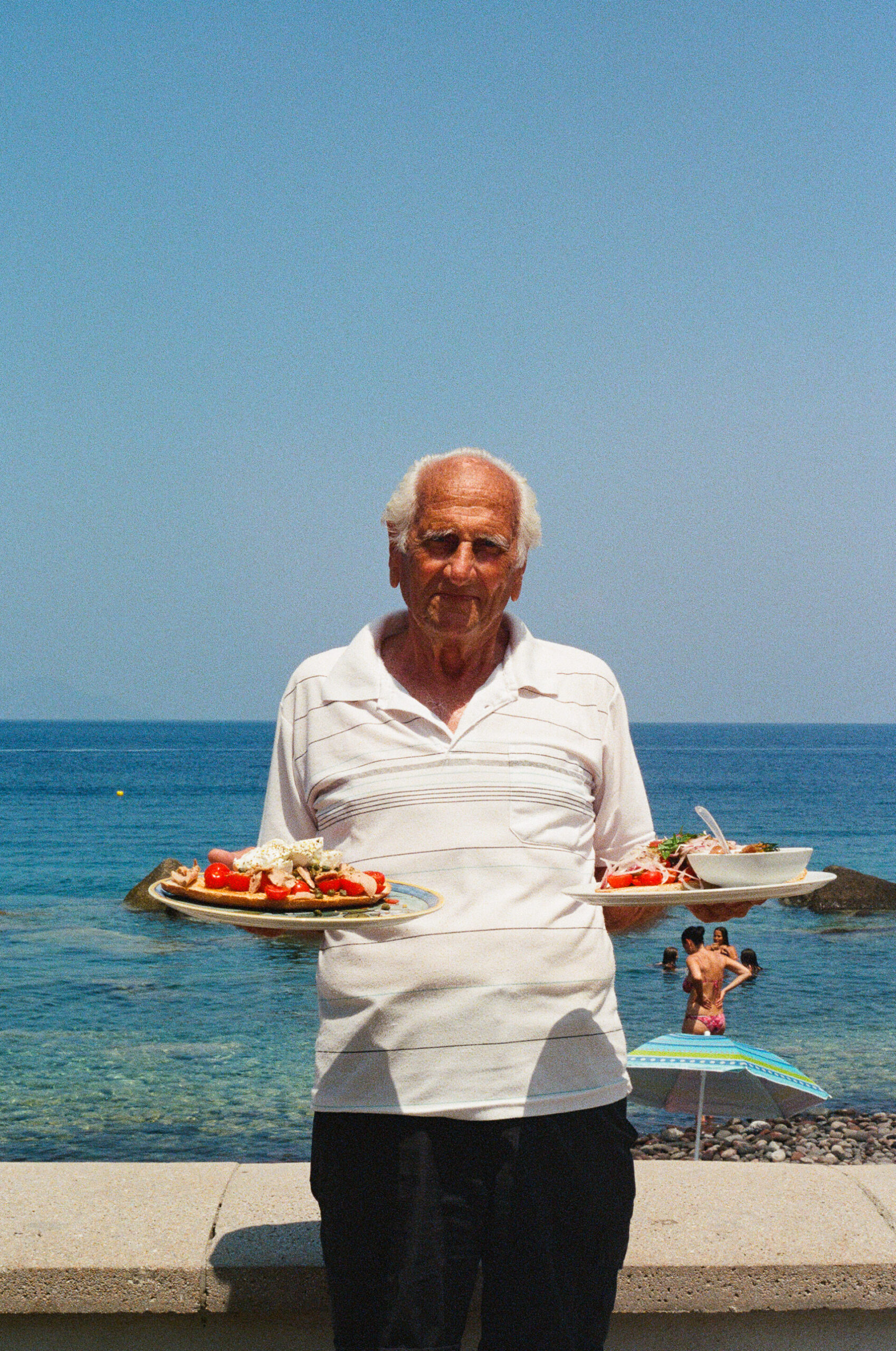
Alfredo serving his "pane cunzato" at Da Alfredo
Pa.Pe.Rò al Glicine (Salina) — Beneath a canopy of wisteria, this charming café offers one of the most surprising bites in the Aeolians: granita di ricotta e capperi. The combination sounds unlikely, but it works—the creaminess of the ricotta mellowing the bright salinity of local capers for a delicate flavor that’s distinctly Aeolian.
Ristorante da Zurro (Stromboli) — Owned by the charismatic Filippo Utano, also known as Zurro, this restaurant offers a dining experience that’s both rustic and refined. Signature dishes include Pietre di Mare and spaghetti alla strombolana—top-notch thanks to the fresh, local seafood.
On the mainland (while waiting for the aliscafo, or hydrofoil):
If you’ve got a bit of time before your hydrofoil to Panarea, Milazzo offers a few essential stops. English Bar is beloved for its soft, fluffy brioches and wide range of granitas, while Bar CD is a classic—almond and lemon granita, sometimes topped with coffee, is the move. With small, round blue tables perched on a platform overlooking the dock, it’s where you get your first taste of the island and where you witness the beauty of people coming and going. For something savory, Frangipane – Forno e Cucina turns out beautifully oily focaccia: one for now, one for the boat.
